
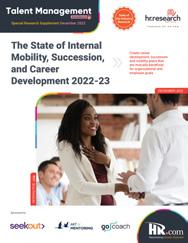
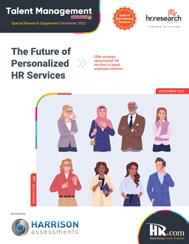



DECEMBER 2022 • Vol. 9 • No.12 (ISSN 2564-1972) Themed Edition on Talent Management Trends 2023 14 TALENT MANAGEMENT TRENDS FOR 2023 - Brett Farmiloe, CEO and CHRO, Terkel.io Page 21-42 Page 53-60 The State of Internal Mobility, Succession, and Career Development 2022-23 The Future of Personalized HR Services



07 INDEX On the Cover Articles Talent Management Excellence DECEMBER 2022 Vol.09 No.12 14 Talent Management Trends For 2023 Companies will start using a more holistic approach to managing talent - Compiled by Brett Farmiloe, CEO and CHRO, Terkel.io 61 5 Reasons Why Employees Quit And What To Do About It Smart managers realize the cyclical nature of retention - Kate Zabriskie, President, Business Training Works, Inc. 68 New Year, New You? A Light-Hearted Look At 2023 Resolutions For Managers Embrace new beginnings - Thom Dennis, CEO, Serenity in Leadership (ISSN 2564-1972) 17 Understanding Hormone Issues Is Key To Retaining Women Tackling the obstacles women face at work - Joy Burnford, Founder and CEO, Encompass Equality 47 Move Over ‘Quiet Quitting,’ An Old Trend Is Back: ‘Quiet Firing’ The toxicity of this trend is quite alarming - Amit Mishra, CEO and Founder, iMocha Themed Edition on Talent Management Trends 2023 The State of Internal Mobility, Succession, and Career Development 2022-23 The Future of Personalized HR Services Page 21-42 Page 53-60
How To Keep Top Talent: Making Your Retention Strategy With Intention

In good times and bad, it’s important to be intentional about your retention strategy
- Anne Maltese, Director, People Insights, Quantum Workplace
The Future Of Work: Industry Predictions For
2023
- Compiled by The Excellence Publications Team, HR.com
Perk Up Your Recruitment And Retention Strategy In 2023
Attract and engage talent by leading with a strong culture and career growth opportunities - Maggie Da Prato, Head of Talent, Americas, Dialectica
Top Picks 14 43 50 63
The New Workplace Villain Is ‘Quiet Constraint’
Three simple ways to unlock your team’s potential - James Micklethwait, Vice President, Kahoot! at work

INDEX
How are our Talent Management Products and Services helping to make you smarter?

Talent Management Excellence - Monthly Interactive Learning Journal
This monthly interactive learning experience captures key metrics and actionable items and keeps you focused on your Talent Management Needs.
Talent Management Webcasts for Credit
Talent Management Virtual Events

Talent Management Virtual Events will help individuals who deal with the different areas in talent management get a better understanding of the big picture of their organization. Manage performance and talent effectively by studying topics from compensation and incentives, technologies, and compliance to managing and tracking performance of an organization, a department, employee, or even the processes to build a product or service. Each Virtual Event consists of up to 10 credit webcasts.
HR.com webcasts deliver the latest Talent Management industry news, research trends, best practices and case studies directly to your desktop. Webcasts are available live online with a downloadable podcast and a copy of the slides (PDF) available before and after each webcast. Earn all of the required recertification credits for aPHR, PHR, SPHR, GPHR, and SHRM Certifications. HR.com’s one-hour webcasts, in every HR specialty including Talent Management, are pre-approved for HRCI and SHRM credit (excluding Demo webcasts).
Talent Management Community
Join almost 120,000 HR.com members with a similar interest and focus in the Talent Management Community. Share content and download research reports, blogs, and articles, network, and “follow” peers and have them “follow” you in a social network platform to communicate regularly and stay on top of the latest updates. This well established Talent Management Community is an invaluable resource for any HR professional or manager.
Use these invaluable Talent Management resources today! For more information phone: 1.877.472.6648 | email: sales@hr.com | www.hr.com
Editorial Purpose
Excellence Publications
Debbie Mcgrath Publisher, HR.com
Babitha Balakrishnan Editor, Talent Management Excellence

Talent Management Trends to Expect in 2023
Retaining top talent is tough right now.
As we move into 2023, organizations are revamping their talent management strategies to engage, develop, and retain talent. With disruptions due to the pandemic leading to a spike in remote/hybrid work, changing employee expectations, mass resignations, quiet quitting, layoffs, and, to add to that, the economic volatility- the employee-employer dynamics and the necessity for meeting employee demands to avoid losing them also completely altered the business landscape.
Workers are not afraid to quit their jobs anymore or to “check out” and unproductively coast along as a disengaged “quiet quitter.” They’re on the search for a job that fits their lifestyle, expectations, and values. Gone are the days when competitive salaries and decent health benefits wooed candidates.
With more opportunities and choices today, employees prefer organizations that offer a more customized employee experience, tailored to individual needs and career goals.
What talent trends can be expected in 2023? What strategies are businesses adopting to be the best at engaging and retaining talent? The December edition of Talent Management Excellence includes informative articles that focus on the talent management trends to watch out for in 2023, the future of work, the new workplace villains, and much more.
Also included are two research reports that focus on the future of work - The State of Internal Mobility, Succession, and Career Development 2022-23 and The Future of Personalized HR Services. Download these recent reports for key insights and takeaways on how organizations might become more
successful with career development, succession and mobility plans, and strategic personalized HR services.

Terkel.io’s CEO and CHRO, Brett Farmiloe has compiled a list of talent management trends for 2023, as shared by leaders. From hybrid work models to virtual learning, AI and rapid recruiting, his article, 14 Talent Management Trends for 2023, will help you decide what you need to prioritize to give your organization a competitive advantage.
We have also included a few predictions for 2023, as shared by top executives, on some of the workforce changes we might see in the new year and how businesses can adapt. Do check out The Future of Work: Industry Predictions for 2023
Kahoot! at work’s James Micklethwait in his article, The New Workplace Villain Is ‘Quiet Constraint’ highlights three simple ways to unlock your team’s potential.
In brief, employee satisfaction will continue to be an ongoing talent management concern in 2023. Organizations should ensure that employees have the resources they need to stay healthy and happy.
We hope you enjoy reading the articles focusing on the latest talent management strategies, best practices, and recommended actions for HR leaders as the next year unfolds. Do let us know your feedback/suggestions.
Happy Reading.
Disclaimer: The views, information, or opinions expressed in the Excellence ePublications are solely those of the authors and do not necessarily represent those of HR.com and its employees. Under no circumstances shall HR.com or its partners or affiliates be responsible or liable for any indirect or incidental damages arising out of these opinions and content.
EDITOR’S NOTE
Subscribe now for $99 / year And get this magazine delivered to your inbox every month Become a Member Today to get it FREE! SIGN UP OR For Advertising Opportunities, email: sales@hr.com
©
HR.com. No part of this publication may be reproduced or transmitted in any form without written permission from the publisher. Quotations must be credited.
Copyright
2022
Our mission is to promote personal and professional development based on constructive values, sound ethics, and timeless principles.
Debbie McGrath CEO, HR.com - Publisher
Marketing, and
Babitha Balakrishnan and Deepa
Excellence Publications Managers and Editors
Management Excellence (ISSN
Editor
Design and Layout (Digital Magazine)
Magazine
Version)
Correspondence
send any correspondence, articles, letters to the editor, and requests to reprint,
or excerpt articles to
For customer service, or information on products and services, call
Management Excellence
published monthly
Dawn Jeffers VP, Sales Sue Kelley Director (Product,
Research)
Damodaran
Talent
2564-1972) Babitha Balakrishnan
Arun Kumar R
Vibha Kini
(Online
Submissions &
Please
republish,
ePubEditors@hr.com
1-877-472-6648 Talent
is
by HR.com Limited, 56 Malone Road, Jacksons Point, Ontario L0E 1L0 Internet Address: www.hr.com Write to the Editor at ePubEditors@hr.com
In a world of unparalleled challenges (global pandemic, racial injustice, political rivalry, digital 4.0, emotional malaise), uncertainty reigns. Finding opportunity in this context requires harnessing uncertainty and harnessing starts with reliable, valid, timely, and useful information. The Excellence publications are a superb source of such information. The authors provide insights with impact that will guide thought and action.
Dave Ulrich
Rensis Likert Professor, Ross School of Business, University of Michigan Partner, The RBL Group

I have really enjoyed both reading and contributing to HR.com’s magazines over the past year. As a scholar-practitioner, it has been a wonderful outlet to share my current academic research with a broader practitioner audience, in a very timely manner. If you want to reskill and upskill your workforce, point them towards the wide array of offerings from HR.com.
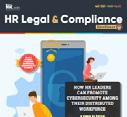

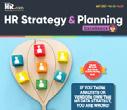
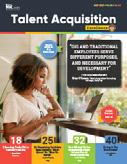
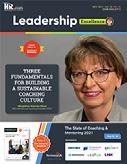 Jonathan H. Westover, Ph.D., MPA, SFHEA, AFCIPD
Jonathan H. Westover, Ph.D., MPA, SFHEA, AFCIPD


Chair/Professor | Organizational Leadership Academic Director | Center for Social Impact Faculty Fellow | Center for the Study of Ethics Utah Valley University
During the COVID pandemic, I have learned that I need a source that provides high-quality, cutting-edge, and timely information on a wide-variety of topics. HR.com’s Excellence Publications has been that source for me.






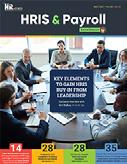
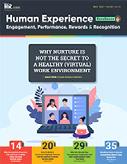 Ryan Gottfredson, Ph.D.
Ryan Gottfredson, Ph.D.
Consultant/Trainer/Speaker/Coach Assistant Professor - California State U. Fullerton
Talent Management Excellence presented by HR.com AUGUST 2022 6 Submit Your Articles
We’re eager to hear your feedback on our magazines. Let us know your thoughts at ePubEditors@hr.com WHY EXCELLENCE PUBLICATIONS?
14 Talent Management Trends For 2023
Companies will start using a more holistic approach to managing talent

Compiled by Brett Farmiloe, Terkel.io
“What is one Talent Management trend you predict for 2023, and how is your company approaching this?”
From prioritizing employee satisfaction to ramping up automation strategy, here are 14 answers to the questions, as shared by top executives.
● Employee Satisfaction Will Remain at the Forefront
● The Hybrid Work Model Will Advance
● More of a Focus on Mental Health
● An Impetus to Keep Everyone Informed
● Proactive Hiring Will Become More Common
● A Greater Reliance on AI Tools
● Growing Need of Visual Collaboration Tools for Remote Talents
● Increase in Goal Tracking & Performance
● A Greater Focus On Virtual Learning
● Rapid Recruiting Becoming a Norm
● More Consideration for Employees’
Professional Goals
● Work-Life Integration Gaining More Traction
● Changes for a Holistic Approach to Managing Talent
● Increased Usage of Automation for Talent Management
Talent Management Excellence presented by HR.com DECEMBER 2022 7 Submit Your Articles
COVER STORY
Linda Scorzo, CEO, Hiring Indicators

Employee
Satisfaction
Will Remain At the Forefront
While things have self-corrected a bit in response to the economic downturn, employee satisfaction will continue to be an ongoing talent management concern in 2023.
You can no longer take for granted that basic benefits will be enough to keep employees happy. If you don’t know what makes them tick, your HR could be in for a rude awakening.
As for us, we head this off with the use of pre-employment testing. Through pre-hire assessment tools, we can find people who fit both our open positions and company culture. Pre-hire assessments are incredibly helpful, and we can use the results in employee evaluations down the line.
The world is still recovering from the pandemic. With structures, systems, and technology in place, we expect businesses to enhance their policies in managing a hybrid workplace. However, with the quiet quitting phenomenon and the state of mental health deteriorating, employees yearn for more. More substance, trust, connection, and meaning.
We believe organizations need to find their humanity. Facilitation skills are essential in preparing leaders to navigate ambiguity & uncertainty.
Travis Lindemoen, Managing Director, nexus IT group

More of a Focus on Mental Health
As we move into the new year, companies are thinking about the talent management trends that will shape the next year. We predict that one of the biggest trends will be a focus on employees’ mental health.
Douglas Ferguson, President, Voltage Control

The Hybrid Work Model Will Advance
We predict organizations will become ever more sophisticated in how they support hybrid work this 2023. At the height of the Covid-19 pandemic, organizations have explored the benefits and challenges of remote work.
In today’s fast-paced and constantly connected world, along with the solitary confinement that comes with remote work, it’s more important than ever to make sure that employees are taking care of their mental health.
We’re already seeing this trend emerge in 2022, with more companies offering mental health days and benefits like meditation and yoga classes. We believe this trend will continue to grow in 2023, and we’re committed to making sure that our employees have the resources they need to stay healthy and happy.
Talent Management Excellence presented by HR.com DECEMBER 2022 8 Submit Your Articles 14 Talent Management Trends For 2023
Walter Lappert, CEO, Triad Drones
An Impetus to Keep Everyone Informed
Maintaining transparency and keeping everyone in the loop is perhaps the best way to fight-back business risks and difficulties as a single unit. If you’re keen on achieving your organizational goals and keeping the information to everyone scattered and uneven, it would mean uneven efforts/task-completion from your employee’s side.
So our company is approaching transparency without even trying. Simply by keeping every communication documented through a project/team-management software like Slack. Since every Slack channel of our organization is open to everyone, we share every message and announcement from our freelance copywriter to our C-level execs.
Our approach is also starting up ideation-specific channels because even the entry-level employee can have an unorthodox idea to enhance our operations. Or they may spot a loophole. If we’re maintaining transparency with our information, we’re getting each and every mind in the organization working towards the same goal.
Jon Torres, CEO, Jon Torres


Proactive Hiring Will Become More Common
Traditionally, talent recruitment has been a reactive approach where companies announce job openings following a vacancy. It often takes weeks to receive applications and evaluate tens or hundreds of them, and even longer to interview and onboard the winning candidate(s).
But after The Great Resignation of 2021 and the subsequent talent shortage, more businesses are exploring proactive sourcing; creating and continuously updating a database of potential candidates to recruit from.
By selecting ideal candidates ahead of demand, you are prepared in case top talent leaves unexpectedly. The extra time also allows you to evaluate your skills gap, hire people based on your medium- to long-term company strategy, and hire prime candidates without rushing.
Talent Management Excellence presented by HR.com DECEMBER 2022 9 Submit Your Articles 14 Talent Management Trends For 2023
Dawn Wood, HR Manager, Woodyatt Curtains

A Greater Reliance on AI Tools
With talent management, we’re already seeing a greater reliance on AI tools, and it’s not something I think is going to slow down in 2023.
One area we’re seeing AI really excel in is performance mapping alongside career progression, essentially tailoring organizational progress maps for talent based on their internal metrics.
For example, employee preferences on training, management approaches and their long-term goals all can be mapped using AI to a relevant career path within an organization that is more nuanced than a simple “matching” exercise by some of the current tools on the market.
employee participation. They also help improve teamwork, allowing your remote employees to get updates and actively engage despite their asynchronous schedules.
In our organization, leveraging visual collaboration software is an effective way for our team leaders to engage with their subordinates. In 2023, we plan to update our collaboration tools to make it easier for managers or supervisors to address employee concerns. This will also result in a smoother flow of communication within our organization, increasing the chance of achieving our goals.
Brett Ungashick, CEO & CHRO, OutSail

Increase in Goal Tracking & Performance
As we potentially enter a recession and we see layoffs hitting companies in many sectors, I sense we will see a renewed focus on productivity and goal attainment.
Sam Tabak, Board Member, RMBH Charities

Growing Need of Visual Collaboration Tools for Remote Talents
Remote work is gaining popularity, and so is the need for visual collaboration tools to efficiently manage talents. Platforms like Microsoft Teams and Zoom are excellent tools to increase productivity and encourage
We’re instituting a new OKR tracking framework at our company in Q4 so that we can better align everyone’s efforts, ensure that all individuals know how their work impacts the larger company, and provide clear metrics for managers and employees.
A recession can be a stressful time for managers and employees, but we believe that creating greater clarity will help ease that stress.
Talent Management Excellence presented by HR.com DECEMBER 2022 10 Submit Your Articles
14 Talent Management Trends For 2023
Jonathan Merry, Co-Founder & CEO, CryptoMonday

A Greater Focus On Virtual Learning
With employee retention becoming a major problem for many employers, we’ll see a growing need for virtual learning to keep workers engaged for the long term. Asynchronous online courses and virtual training sessions will become even more commonplace, especially since these are cost-effective ways to train and support employees.

We’re preparing for this trend by working on our company’s training materials. Our HR department is working closely with our content production team to create onboarding courses for all future hires, which will eventually provide employees with all the resources they need to excel at their roles.
Dwayne Kula, President, Led Lighting Supply

Rapid Recruiting Becoming a Norm
With so many opportunities for talented candidates, if you follow the old approach of keeping them waiting for a week, you’re already losing a lot. 2023 is all about rapid recruiting.
Candidates do not have one week to respond to your questions, conduct an interview, and then wait for results the following week. They want fast answers. And to stay on track with them, fast recruiting will be extremely important.
Our company intends to approach this by maintaining an open portal for candidates, with one HR actively responding to each one of them. This ensures that the candidate is hired if they are qualified and can be enrolled in the middle. This is the best opportunity to hire extraordinary talent.
Talent Management Excellence presented by HR.com DECEMBER 2022 11 Submit Your Articles 14 Talent Management Trends For 2023
More Consideration for Employees’ Professional Goals
In 2023, managers and leaders will pay more attention to employees’ professional goals and their desire to develop or increase their skills. Employees, especially those from Generation Z, recognize that experience counts above education. Gradually, they will demand constant upskilling from their employers. Their goal will be to keep their knowledge up to date.
Managers and leaders will have no choice but to change their existing talent management objectives by offering employees individual development within the company’s structures.
In 2023, the conversation about the company’s growth will accompany a discussion about development and opportunities for its workforce. And if employees find that the company is limiting them instead of enhancing progress, they seek possibilities to advance their careers elsewhere.
Thus, in 2023, businesses will have to show their dedication to their employees, starting with a dialogue about their expectations to ensure practical growth.
Nina Paczka, Community Manager, Live Career Mark Woodbury, Co-Founder, Minerva Equity


Work-Life Integration Gaining More Traction
Work-life integration is predicted to gain more ground as more organizations embrace the remote work setup by next year. Companies that transitioned from in-person reporting to a remote or hybrid work setup find that the change in location is not enough to provide employees with proper work and life balance. It turns out, working the same 9-to-5 clock in the walls of the home can make it hard to unplug from work even after hours.
For more flexibility, we predict companies will forego adhering to the traditional 9-to-5 setup. The goal is for employees to have a more flexible work-life integration where their productivity isn’t measured by the timeframe of their workday.
A typical workday can look like working a little in the morning, taking care of personal matters in the afternoon, then clocking back in the evening to resume work tasks. This is a setup we are slowly transitioning into as early as now.
Talent Management Excellence presented by HR.com DECEMBER 2022 12 Submit Your Articles
14 Talent Management Trends For 2023
Kimberley Tyler-Smith, VP of Strategy & Growth, Resume Worded

Changes for a Holistic Approach to Managing Talent
One talent management trend we predict for 2023 is that companies will start using a more holistic approach to managing talent.
This means they will use a variety of tools and data points in order to understand their employees rather than relying on one or two metrics. This will allow them to build more accurate profiles of their employees’ strengths and weaknesses, as well as the best ways to help them grow and succeed.
Our company is already approaching this trend by using a variety of tools and data points for managing our employees. We are constantly looking at our workflows and processes to see if there’s anything we can improve upon or optimize so that we can better support our team members.
Matt Teifke, Founder, CEO, & HR Head, Teifke Real Estate


Increased Usage of Automation for Talent Management
Technology is changing how HR teams manage talent, and automation is a critical component of this trend. Employers can streamline their talent management process with automation and reduce reliance on manual processes.

Companies are increasingly turning to automated solutions such as Applicant Tracking Systems (ATS) to improve their recruitment process, reduce administrative costs, and improve their ability to identify the best candidates.
At our company, we are already taking steps to implement automation in our talent management process. We are currently leveraging an ATS system that helps us streamline our recruitment and onboarding processes, reducing reliance on manual labor and ensuring more accuracy in our data capturing.
Would you like to comment?
Talent Management Excellence presented by HR.com DECEMBER 2022 13 Submit Your Articles
14 Talent Management Trends For 2023
Brett Farmiloe is the Founder/CEO and currently, the CHRO of Terkel.io
How To Keep Top Talent: Making Your Retention Strategy With Intention

In good times and bad, it’s important to be intentional about your retention strategy
By Anne Maltese, Quantum Workplace
HR leaders are facing a time of uncertainty. Some have been in this position for quite some time. Some organizations are facing budget cuts and downsizing. For others, The Great Resignation is still lingering. The Bureau of Labor Statistics is
reporting quit rates at near-record highs.
Regardless of where an organization finds itself, focusing on retaining top performers is important in navigating future challenges. This is true, especially in times of uncertainty.
Organizations have a leaky bucket they keep expecting to fill up. Top talent slipping away is a problem in any circumstance.
HR leaders need to focus on what matters to employees and connect that to business goals to drive both employee and business success. That means, taking a hard look at why employees leave, why they stay, and taking meaningful action to show them your organization is where they want to be.
As the war for talent rages on, there are three things HR leaders can do to stop the leaks and retain top talent.
1. Capture What Might Be Driving Employees to Leave
It’s hard to address a problem if you don’t know what is causing it. HR leaders need a clear picture of what is driving people to leave and what will help them make the decision to stay.
Talent Management Excellence presented by HR.com DECEMBER 2022 14 Submit Your Articles
TOP PICK
The good news is that turnover is both predictable and preventable.
Quantum Workplace research shows that 1 in 3 employees said their departure from their last organization was preventable. Most employees leave due to a lack of career growth, lack of fair pay, or because they felt unappreciated
Understanding why an employee left is just part of the picture. You also need to connect this information back to other key moments in the employee journey. Look at how employee perceptions trend over time. Get a bird’s eye view by comparing data to see if there are connections throughout the employee experience.

Here are the questions you need to answer to address turnover:
● What’s your turnover rate? How does this compare to others in your industry?
● What demographics are leaving? Are there specific generations, positions, or new employees that are walking out the door?
● Why are the employees leaving? What was the reasoning they told their boss or their response on the exit survey?
● Where does turnover pose the greatest risk?
● How does exit survey data compare to other employee voice data like new hire pulses and engagement surveys?
2. Move from Discovery to Response
Approaching a retention strategy with intention means making sure everyone is doing their part. Sure, some turnover is inevitable, but you want to avoid losing your best employees whenever possible.
Once you have the underlying information about what is causing your turnover, take action. Prioritize items that will have the most impact with reasonable effort, then work on making incremental changes to chip away at long-term changes. Evaluate if your strategies are working along the way.
Discuss your retention strategies with managers. Everyone needs to be on the same page to move the needle on turnover. Make sure they have the tools they need to make meaningful changes. Here are some things to start with:
● Show managers the data about what is happening on their teams.
● Train managers to have conversations with their teams about performance, growth, and well-being.
● Keep managers in the loop so they can connect the dots between what they’re doing with their teams and how it plays a role in the organization.
3. Create a Culture of Engagement
Research shows that engaged employees are less likely to leave their organizations. Highly engaged employees are 6.8 times less likely to apply to new jobs. Engagement is the sticky factor that keeps your top talent with you.
Talent Management Excellence presented by HR.com DECEMBER 2022 15 Submit Your Articles
How To Keep Top Talent: Making Your Retention Strategy With Intention
Your engagement strategy from 2019 won’t work in the new world of work. Work has changed, and your strategy must too. One of the greatest strategies we have to combat unwanted turnover is to aim the organization’s culture at engaging employees.
Culture is how work gets done and can have a positive or negative impact on employee engagement. Here’s how you can make sure you’re aiming your culture at engagement year-round:
● Ask your employees about their work life Conduct an annual engagement survey, pulse surveys, employee lifecycle surveys, and exit surveys so you know how employees are feeling.
● Analyze the data Connect the dots from employee feedback to other data at your organization, like
performance metrics and turnover rate.
● Act on the findings. It’s pointless to survey employees and do nothing with the information. Employees want to know that you value them. Show them you care by taking action to make their work experience better.
In good times — and in times of uncertainty — it’s important to make sure you’re being intentional about your retention strategy. This will help you stand out in a competitive labor market and increase your ability to keep your best talent.
Digging deep to uncover why employees are leaving, action planning, and creating an engaging culture are three ways organizations can reduce
unnecessary turnover and become an employer of choice.
Anne Maltese is the Director of People Insights at Quantum Workplace. She leads the team of subject matter experts on employee engagement and performance. Anne joined Quantum Workplace in 2016 after being in a consulting role at Gallup. Would you like to comment?

Talent Management Excellence presented by HR.com DECEMBER 2022 16 Submit Your Articles
To Keep Top Talent: Making Your Retention Strategy With Intention
How
Understanding Hormone Issues Is Key To Retaining Women
Tackling the obstacles women face at work
By Joy Burnford, Encompass Equality
Women’s hormonal challenges have long been considered taboo in the workplace, yet the side effects can have a major impact on confidence levels, career progression, and well-being. In fact, for many women, it leads to them leaving their jobs altogether.
In my new book, Don’t Fix Women, I summarize these challenges as the four Ms: menopause, maternity, miscarriage and monthlies. Many companies are now looking for ways to meaningfully support female employees and are offering increased education to all about why the four Ms can be major obstacles for women at work. This is particularly significant when you consider that female hormonal challenges have rarely been acknowledged in the workplace until recent years. I’m pleased these conversations are now on the rise and am also proud to be working with the British Standards Institution to create a new standard for menopause in the workplace which will help organizations develop more supportive policies.
So, why is this so important? We know the most significant problem for companies, when it comes to gender equality, is the leaky pipeline and retaining women. The four Ms play a key role here: women of menopausal age are the fastest-growing demographic in the UK workforce today, yet one study reported 42% of menopausal women considered leaving their
job due to symptoms; nearly one in five women leave the workforce completely in the five years following childbirth, compared to just one in 20 men.
Meanwhile, women’s career progression can be greatly affected by hormonal issues: 99% of menopausal women reported that their symptoms had negatively impacted their work; only 31% of mothers return to, and remain, in full-time work five years after having a child.
The four Ms also impact women’s well-being at work: consider that 90% of fertility patients report feelings of depression and 29% of women experience long-term post-traumatic stress following a miscarriage; 58% of menopausal women reported feeling more stress at work due to symptoms; one in five women find painful periods interfere with their daily life.
We must remember that due to the taboos around hormonal issues, many women suffer in silence and simply cope with the side effects or symptoms, whether physical or mental, alongside attempting to do their jobs. It’s worth noting here that for global organizations there are some countries/regions around the world that find it very difficult to talk about women’s hormone issues, either for cultural or legal reasons: be mindful and sensitive to this if you’re looking to roll out policies.
Talent Management Excellence presented by HR.com DECEMBER 2022 17 Submit Your Articles
Let’s also consider this in terms of the bottom line: the cost to the British economy of sick days due to painful periods is £531 million; the cost of replacing an employee is between six-nine months' salary, some studies suggest more; globally, it is estimated that menopause-related productivity losses amount to more than US$150 billion a year. So, we know the numbers stack up (add to this the $28 trillion that could be added to the global GDP if women were to participate in the economy identically to men).
While this myriad of issues can’t be fixed overnight, there are many things that organizations can do to support women suffering hormonal challenges which will help strengthen employee relations, drive recruitment, retain key female talent, reduce the cost of absence and potential employment disputes and improve productivity. I offer three cultural frameworks in Don’t Fix Women, all of which offer solutions to issues arising from the four Ms. These are flexibility, allyship and coaching.
Let’s start with flexibility, particularly personalized flexibility, which can bring immeasurable benefits: for a menopausal woman, it can offer her the ability to manage her symptoms, perhaps by avoiding the crowds on busy trains if she’s having hot flushes or starting later if she’s had a bad night’s sleep; for a
mother, flexibility can allow her to better juggle work and home life; for someone going through fertility treatment, flexibility can allow them to fit in medical appointments, without the rigmarole of booking time off; for someone suffering painful periods, flexibility can allow her to work remotely on a day when she’s suffering, perhaps with a hot water bottle on her lap to alleviate pain.
A few important notes here are that flexibility should be adopted as the norm, so that those who use it don’t feel singled out, and organizations must show they trust their employees to do their work in a way that fits around their lives. It can help to role-model flexibility from the top: ensure senior staff make a conscious effort to show they work from home, or perhaps leave early to do the school run, take part in some exercise or attend a family event. To create a flexible culture, encourage an environment where employees know it is OK to request to rearrange meetings, switch tasks, and take breaks – all of these measures will ensure women feel comfortable structuring the working day to ensure they are their most productive (and can fit work around life, rather than life around work).
Onto allyship as our second framework: allyship can ensure women feel supported at work, whether they are suffering from issues relating to the fours Ms or not, and are more likely to progress into senior roles. Organizations have an important role to play in offering appropriate training and support, not only for women but for all employees: everyone should be mindful of the challenges faced by female colleagues who may be suffering symptoms and side effects that can potentially affect their work.
When it comes to menopause, one of the key areas of allyship is education: we know education around menopause is severely lacking (something I experienced first-hand when I started having perimenopausal symptoms and had no idea that’s what it was; perimenopause can last up to ten years before the menopause and typically starts between 45 and 55). A US study of 1000 women showed 45% didn’t know the difference between perimenopause and menopause: if women don’t know what’s coming, how can we expect the men in our lives to?

Talent Management Excellence presented by HR.com DECEMBER 2022 18 Submit Your Articles
Hormone Issues Is Key To Retaining Women
Understanding
Allyship can mean educating your teams so that they feel better equipped to support a colleague who is going through menopause: this could be through running seminars or workshops; it could be offering male-only information events, which may allow men to feel more comfortable asking questions; it could be introducing support groups or publicizing resources that are easily accessible.
Education through allyship is also key to creating a culture where it’s OK to talk about miscarriage, menstruation and fertility issues: while these can be very personal experiences, that some may not want to discuss at work, it’s still beneficial to offer advice to managers on how they can confidently support women in their team. One way to do this is by compiling information in one place, so that those seeking it can easily find what resources the company can offer (such as paid leave or counseling). It’s also useful to be able to offer advice on language, so managers know how to be sensitive (e.g., keeping it simple, such as ‘I’m here if you need anything, don’t give work another thought.’)
For maternity, allyship can be key to helping new mothers integrate back into the workforce and progress: it can help to offer female returners a sponsor; it’s essential to have conversations with
mothers about their ambitions, and not simply assume they don’t want additional responsibility or opportunities; HR teams can also help returners to reconnect with people in the business, which can aid confidence (this is key if working remotely or hybrid).

If we move onto coaching, either 1-2-1 or group coaching can be highly beneficial for issues that arise from the four Ms, and can create a safe space for women to share concerns, challenges, and alleviate the associated anxiety, confidence issues and stress. Coaching can help retain women, by helping guide them through managing symptoms or coping with the juggle of work and life and offer them the support needed to progress their careers. Counseling can also be valuable for anyone who has suffered a miscarriage or fertility issues (24% of women experience moderate to severe anxiety following a miscarriage).
I have seen many companies making positive strides in supporting women suffering from hormonal issues; those that focus on hormone issues in their well-being agenda, and provide personalized support to women who need it, will make big strides in becoming inclusive employers that are prioritizing the mental health of their staff and make progress in gender equality.
Joy Burnford is the Founder and CEO of Encompass Equality, a recognized gender equality trailblazer and the author of a new #1 bestseller book ‘Don’t Fix Women: The practical path to gender equality at work’ . With over 25 years of experience as a business leader, non-exec director, podcast host and speaker, she supports organizations to navigate a path to gender equality and enables the retention and progression of women in the workplace. Joy and her team do this through research and consulting, leadership development programs, knowledge sharing and coaching.
Would you like to comment?
Talent Management Excellence presented by HR.com DECEMBER 2022 19 Submit Your Articles
Understanding Hormone Issues Is Key To Retaining Women
Best-in-Class Education For All Your Learning And Training Needs
HR.com prepares HR leaders to be strategic business leaders by curating and delivering best-in-class products and services so you don’t have to waste time seeking out content on your own. We leverage technology and experience to provide you with customized solutions to best meet your professional development needs at every stage of your career.
From on-demand to cohort-based offerings, below is a listing of virtual courses that will challenge and empower you by giving you the tools to drive innovation and success in your organization.
Creating More Respectful Workplaces:
LGBTQ Employees
Increase your understanding of the LGBTQ+ community and improve company culture. An immersive, adaptive course to discover how to develop, implement and maintain an inclusive, safe and accepting workplace for LGBTQ+ individuals through policy, procedures and personal development.
Performance Management
Learn what every good manager does every day: makes sure employees know what they need to do to achieve the organization's goals, checks to make sure the employees are doing those things, praises employees for doing the right things, and uses constructive criticism when that is not the case.
Talent Management and Career Development
Introductory-level course covers the challenges and issues that organizations face in developing and retaining their employees.
Managing Remote Employees
Course explores the benefits and drawbacks of remote work and provides managers with tips for helping their employees stay connected and motivated.
Earn Great Respect, Build Strong Leadership Gain an understanding of the impact of Respect on working relationships and ability to influence others without intimidation to lead teams more effectively.
Gain access to more expert-led courses.
At HR.com, we are committed to educating and inspiring HR professionals and helping them build meaningful and impactful careers. With products and resources rooted in education, research, and leveraging cutting-edge technology, we help at every career stage - and over 1.92 million HR pros agree! (How could that many people be wrong?) By delivering best-in-class learning products, 250+ annual webcasts and 30+ world-class events, and innovative and thought-provoking research through the HR Research Institute, HR.com strives to inspire and strengthen workforces to change the world. HR.com also offers the most comprehensive HR certification exam preparation and guarantees a passing score on all SHRM and HRCI certification exams. Technology and experience drive our customized solutions that will help you become the best and most successful version of yourself.
Talent Management Excellence presented by HR.com DECEMBER 2022 20
The State of Internal Mobility, Succession, and Career Development 2022-23
Create career development, succession and mobility plans that are mutually beneficial for organizational and employee goals



Sponsored by:
INTERACTIVE DECEMBER 2022 Special Research Supplement December 2022
Sponsor any of this year’s state of the industry research topics and come away with your very own affordable and branded research report and infographic, establish yourself as an industry thought leader by presenting at a one-day Virtual Event, and bolster sales through the generation of qualified leads.
Hottest Trends in Benefits
See list of hot industry research topics below and give us a call to get started.

New Ideas and Tools for Effective Performance Management Virtual Event

Jan 31, 2023
Learn more at: hr.com/Performance ManagementVirtualEvent
The State of Contingent Work
Feb 7, 2023
Learn more at: hr.com/contingent workresearch
Virtual Event
Jan 25, 2023
Learn more at: hr.com/BenefitTrends VirtualEvent
The State of Human Experience in the Workplace
Feb 15-16, 2023
Learn more at: hr.com/ HumanExperienceResearch
The Future of Upskilling and Employee Learning
Feb 22, 2023
Learn more at: hr.com/ upskilling
The Future of Workplace Trends
Feb 8, 2023
Learn more at: https://hr.com/ workplacetrends
Solving for Today’s Workforce Shortages
Virtual Event
Feb 23, 2023
Learn more at: hr.com/workforce shortagevirtualevent
Align your brand with this year’s State of the Industry hot HR
and showcase your expertise
topics
A State of the Industry Research & Virtual Event Sponsorship Opportunity
us
|
|
Contact
today to get started at sales@hr.com
1.877.472.6648
hr.com/industryresearch
RESEARCH REPORT SUMMARY
The State of Internal Mobility, Succession, and Career Development 2022-23 24
Survey conducted by: Sponsored by:
ARTICLES
The World of Employee Learning Is Changing Fast. Are you Ready? 29
33
37 7 Strategies to Make Internal Mobility Successful
Is Mentoring the Glue for Mobility, Succession Planning and Career Development?
By Alex Richardson, CEO & Founder, Art of Mentoring




 By
By
Claire Fang, Chief Product Officer, SeekOut
The HR Research Institute, powered by HR.com, the world’s largest social network for Human Resources professionals, is a key part of our mandate to inform and educate today’s HR professionals. Over the past three years, the HR Research Institute has produced more than 85 exclusive primary research and state of the industry reports, along with corresponding infographics in many cases, based on the surveys of thousands of HR professionals. Each research report highlights current HR trends, benchmarks, and industry best practices. HR Research Institute Reports and Infographics are available online, and always free, at www.hr.com/featuredresearch
Talent Management Excellence presented by HR.com DECEMBER 2022 23 Submit Your Articles
INDEX
The State of Internal Mobility, Succession, and Career Development 2022-23
Create career development, succession and mobility plans that are mutually beneficial for organizational and employee goals

Internal mobility, career development, and succession management are essential to both employee and organizational goals. Each of these issues, while separate, strongly influences the others. When done well, they can have tremendous benefits such as improved employee retention, increased engagement, and the ability to bridge skills gaps. However, when even one of the elements is not done well, it can lead to major organizational challenges.

To get a better understanding of today’s state of internal mobility, succession, and career planning, HR.com conducted an exclusive research study that looks into the effectiveness of these critical processes, the barriers to their success,

what organizations can do to overcome these challenges, and much more.
Key Findings
● While most respondents say they have effective processes for managing internal mobility, organizations still suffer from a number of challenges.
● While the majority of organizations have succession plans, there is much room for improvement.
● The time and financial resources dedicated to employee development have increased in many organizations over the past six months, but they still struggle to allocate development opportunities.
24 RESEARCH REPORT SUMMARY STATE OF THE INDUSTRY RESEARCH
Exclusive Study By The HR Research Institute
The Current State of Talent Mobility and Development

Most say that their organization has an effective process for managing internal mobility, but there’s still room for improvement.
Eighteen percent actively disagree that their organization has an effective process for managing internal mobility

25 RESEARCH REPORT SUMMARY STATE OF THE INDUSTRY RESEARCH
0 20 40 60 80 100 13% 20% 41%
5%
Agree Strongly agree Strongly disagree Disagree Neither agree nor disagree
21%
Survey Statement: Your organization has an effective process for managing internal mobility.
The three biggest obstacles to internal mobility are:
● managers who do not encourage movement (31%)
● employees are not provided with dedicated development time (28%)
● a lack of positions to move employees into (27%)
About two-thirds of organizations (64%) use an employee referral system to manage internal mobility. Further, the majority (59%) also use digitally accessible information on open positions.
Survey Question: What tools and technologies does your organization use to help manage internal mobility? (select all that apply)

26 RESEARCH REPORT SUMMARY STATE OF THE INDUSTRY RESEARCH 0 10 20 30 40 50 60 70 80 64% 59% 50% 39% 4% Employee referral system Digitally accessible information on open positions Internal mobility platform Skills marketplace system Other
What Do Internal Mobility Leaders Do Differently?
Internal mobility leaders* are three times more likely than laggards** to say managers are incentivized for advancing employee careers. Similarly, they are also almost three times more likely to say their procedures allow employees to communicate hidden talents.
Internal mobility laggards are over two times more likely than leaders to say their employees are not provided with dedicated development time. Further, laggards are much more likely to say that managers don’t encourage movement (42% vs. 23%).
What Do Succession Management Processes Look
Like Today?
We asked survey respondents if their organization has an effective process for succession management, and found that 48% agree or strongly agree that this is the case.
The majority (91%) of HR professionals say their organizations plan succession either formally, informally, or a mix of both. About twice as many plans formally compared to informally (39% vs. 21%), and another 31% say their programs are a mixture of both formal and informal.
27 RESEARCH REPORT SUMMARY
STATE OF THE INDUSTRY RESEARCH 0 5 10 15 20 25 30 35 40 39% 21% 31% 9% We have a formal succession management program We have an informal succession management program We have both a formal and informal succession management program We do not have a succession management program
Question: Which of the following best describes how your organization approaches succession management? (select the
that best applies) Just 9% of organizations do not have a succession management program
Survey
one
A Look at Career Development Today
The majority of respondents (62%) agree or strongly agree that their organization has an effective process for managing career development. Only 19% actively disagree.

Our data shows that the vast majority of organizations (85%) have some sort of career development process. When we take a closer look, 64% have at least a partially formal process and 21% have an informal process.
For key takeaways and recommendations on The State of Internal Mobility, Succession and Career Planning study, check out the full report.

Read the Research Report
* Internal mobility leaders: respondents who strongly agree that their organization has an effective internal mobility process.
** Internal mobility laggards: respondents who disagree, strongly disagree, or neither agree nor disagree that their organization has an effective internal mobility process.
28 RESEARCH REPORT SUMMARY STATE OF THE INDUSTRY RESEARCH
The World of Employee Learning Is Changing Fast. Are You Ready?

Let’s face it. You could be offering the best products your market has ever known — and you may even be holding a good chunk of market share — but you’re never going to keep that edge if you constantly need to refill your talent pipeline with new hires. It’s the most expensive, time-consuming, frustrating, and productivity-busting route to success you could possibly take. You know it. We know it. The facts prove it.
• The average cost of hiring an employee today is around $4,000 and takes 52 days on average. Plus, it ties up people across your organization — job sourcing, recruiting, hiring, onboarding, and training.
• An increasing number of employees are seeking to work with companies that clearly prioritize career development and learning — and businesses are responding. JPMorgan Chase added $350 million to its $250 million plan to upskill its workforce. Amazon is investing more than $700 million to provide upskilling. PwC is spending $3 billion to upskill all of its 275,000 employees over the next three to four years.
• New hires need job skills that higher education isn’t giving them. A recent Cengage survey of over 1,600 working Americans who graduated from a two-year/community or four-year college in the past five years found that over 1 in 5 (21%) felt their college didn’t provide them with needed job skills and nearly 4 in 10 (38%) “occasionally” or “rarely” use the skills they learned in college.
If it’s not obvious by now, here’s the bottom line: One cost-effective, proven solution for many of today’s hiring and retention problems is for leaders to be much more aggressive about upskilling and reskilling employees.
It’s time for development to engage all employees — not just your high performers or those who are mid-career
Wondering Where to Start? Why Not Your New Hires?

Too many L&D leaders think that upskilling, reskilling, and offering programs to build soft skills should come later in the employee life cycle. The tradition persists that these types of programs are carrots to be dangled in front of employees for the employer to show a commitment to career development. Or they’re offered as a reward for staying with the company or only intended for top performers or career fast-trackers. That’s all mistaken thinking.
Learning that starts from Day 1 on the job will not only boost learner engagement, it will also reduce turnover and better prepare your organization and employees to be resilient, adaptable, and continuously more productive. Even more immediately, learning for new hires meets a critical need: giving all employees the tools to be engaged and successful. Consider that nearly half of the respondents to the Cengage survey mentioned above didn’t believe their education was worth what they paid. A whopping 1 in 3 didn’t believe their education helped them land the job they did finally get.
A May 2021 article in Harvard Business Review (accurately titled “The U.S. Education System Isn’t Giving Students What Employers Need”) summed up the whole situation very well:
“There’s a direct disconnect between education and employability, where employers view universities and colleges as the gatekeepers of workforce talent, yet those same institutions aren’t prioritizing job skills and career readiness. This not only hurts employers, but also sets the average American worker up for failure before they’ve even begun their career, as new employees who have been hired based on their four-year educational background often lack the actual skills needed to perform in their role. To create change as an industry, we must provide greater credibility to alternate education paths that allow students to gain employable skills.”
So, What Are You Doing About All of That?
As the research shows, smart employers will benefit from maximizing the value of their employees’ degrees. One solution is to embed the acquisition of identified needed skills and career coaching directly into your L&D initiatives.
Optimally, this will be delivered by a learning company that partners directly with universities and colleges to offer their alumni the kind of career coaching and skills development they didn’t get in the classroom. Directly linking skill-building and career coaching to an employee’s alma mater ensures greater learner engagement while bringing real-world applicability that complements what they learned in their coursework and delivers skills you need going forward.
It’s also critical to offer the widest possible range of on-demand coaching and courses. Don’t limit your learning platform to either soft or hard skills. Business leaders and team managers have learned the power of soft skills to successfully navigate the rapidly changing way we work and the nearly constant changes in organizational structures. It’s why they’re seeking job candidates who are, for example, skilled at problem-solving, being agile, attentive listening, and change management — regardless of their role or job title.
One last point: Just as students receive grades for their classroom acumen, you need to be able to measure the impact of your experiential learning programs and career coaching. You’ll need a platform that can provide you with company-wide analytics on skill gaps, goal progress, and engagement. You’ll also want to be able to track the acquisition of newly targeted skills, measure employee interactions with content, and track changing levels of engagement with ongoing career support programs.
In short, you want a learning and development partner that can help you prepare all of your employees to thrive in the new world of work — everywhere in the organization and anywhere in the employee life cycle — for a more successful business. Period.
©2022 GoCoach | Made in New York City, Scaling in Philadelphia. | gocoachgo.com


7 Strategies to Make Internal Mobility Successful
Without policy, process, and cultural changes, internal mobility is just lip service
Internal
mobility is key to unleashing the potential of the talent you already have, but it takes thoughtful design and a strong commitment to cultural transformation.
Follow these strategies to avoid common pitfalls and better prepare your organization for internal
mobility that helps your business and employees grow and win together.
1. Get Leadership Buy-in and Support

Successful internal mobility programs require wholehearted support from your C-suite. If a lack of career growth is driving attrition in your

STATE OF THE INDUSTRY RESEARCH 33 ARTICLE
Claire Fang, SeekOut
organization, use the data from engagement surveys, exit surveys, and published research to get your leaders on board. Having the C-suite set good examples and recognize the right behaviors will be instrumental in your program’s success. You can also identify a championing leader and do a pilot with that organization first to create momentum and success stories.

2. Start with Internal Mobility for Gigs
Short-term projects and stretch assignments are great stepping stones to full talent mobility. Hackathons, tiger teams, and volunteer projects can bring together diverse talent to deliver something meaningful—without managers and employees feeling the pressure of a permanent move.
3. Design Your Policy to Level the Playing Field
The barriers to external roles have lowered in recent years. No doubt, your employees are getting
pinged by external recruiters. To level the playing field, you can remove roadblocks in your internal policy. For example: forgo notifying managers if employees want to explore internal opportunities; allow employees to apply for jobs above their current level, adjusting pay if they qualify at the new level; and set reasonable transition times to help everybody navigate the change with clear expectations.
4. Layer in the Right Incentives
While internal mobility may feel counter to a manager’s goal to build a high-performing team, the right incentive goes a long way in mitigating “talent hoarding.” You may provide a direct incentive to managers who acted as coaches for employees making an internal move. Or, create “career sponsors”—experienced people leaders who can help employees navigate career moves as a dedicated part of their role.

STATE OF THE INDUSTRY RESEARCH 34 ARTICLE
5. Drive
Meaningful Career Conversations,
Not Job Conversations
Since internal mobility is a means to employee growth and development, you should strive for more than just enabling people to find their next job internally. Focus on cultural and process change to drive meaningful career conversations. Do managers have career conversations to understand peoples’ aspirations? Do managers and employees follow up with actions to support their goals? Do you have the right tools to facilitate these conversations? When you shift your culture and create new habits, you’ll transform managers into talent advisors and allies of employee growth.
6. Get Your Talent Teams Ready
Your talent team has a big role to play in ensuring success. Designate specific HR roles for internal sourcing and mobility and provide them with the right tools to understand the skills and talent within and outside of your organization. Ensure that manager and employee experience are part of your success metrics to drive the behaviors that will support a successful program. For example, if the Talent team wants to tap an employee for a role, they can’t blindside the current manager. And if an employee is repeatedly rejected for internal roles, HR and managers should help guide them toward the right fit.
7. Choose a People-First Technology Platform
It’s important to recognize that career decisions are complex, human decisions. When choosing a technology platform for internal mobility, AI should assist and elevate people—not make decisions for them. Does the technology make human-driven exploration easier, rather than solely matching skills with open roles? Does it rely on manual
data entry to fuel valuable recommendations? Many companies have tried to push employees to complete a skills profile but have seen poor participation and lacking results. Great technology takes that burden off employees and uses AI to collate data and generate insights based on a variety of external and internal data sources.
A focus on human connection combined with lower manual lift means faster and broader adoption— people will embrace a tool that truly benefits them, rather than just HR. And that’s exactly what we’re offering with our new talent management solution, SeekOut Grow. To learn more, visit our website

Claire Fang is Chief Product Officer at SeekOut, the talent optimization platform that helps organizations hire, grow, and retain talent. Claire believes that great companies are built by great people and is deeply invested in helping organizations build better talent strategies. Before SeekOut, Claire was Chief Product Officer at Qualtrics, helping companies create better employee experiences. She also held positions at Facebook, Microsoft, and McKinsey. Claire holds a Ph.D. in Electrical and Computer Engineering from Carnegie Mellon University.
Would you like to comment?

STATE OF THE INDUSTRY RESEARCH 35 ARTICLE
Is Mentoring the Glue for Mobility, Succession Planning and Career Development?
Alex Richardson, Art of Mentoring

Innovation in the mobility, career development, and succession planning space is moving at unparalleled speeds. Employee engagement has never been higher on the radars of executives as they come to terms with the fact that they are actually in the ‘people business’ where happy employees mean happy customers.

Meanwhile, technological digitization is rapidly changing the WorkTech/HRTech environment, and rightly so. Cumbersome excel spreadsheets
of skills matrices and job descriptions are being digitized to enable career mapping with the likes of TalentGuard, Gloat and Fuel50 leading the way. These technologies are putting data in the hands of managers to make meaningful, data-driven decisions about workforce management; and the power of driving one’s own career, in the hands of the employee.
Employees want to grow and define their pathway to success, however as the dust settles post-Covid,
STATE OF THE INDUSTRY RESEARCH 37
ARTICLE
leadership and HR teams are bracing themselves for what might come next as we all embark on new uncertainties.
The feedback is clear from employees around what they need and it’s bringing to the surface important questions for these leaders right now. How do they futureproof their organization in the face of certain changes with uncertain direction? How do they provide their employees with the tools to navigate the journey and fulfill a sense of belonging that is crucial to their longevity within the business?
The answer to these questions is made easier, and more scalable using technology, but the glue that brings this together to truly make a difference is human connection. Human connection may sound trivial but it’s an organizational necessity that is gradually becoming harder to achieve as teams become more global, digitally enabled, and work with greater levels of complexity.
Whilst employers grapple with how to provide these opportunities, employees are weighing up their options regarding their employment (whether to stay or move elsewhere). Many are searching for better work-life interaction, learning opportunities, and looking externally for workplaces where they can cope with internal and external pressures. This is not easily handled through digital experiences but rather through conversation.
A notable example of an organization that deals with these challenges is Defense. Defense services have for time immemorial dealt with rapid change, external pressures, and share many of the common themes that the corporate world is facing such as attrition, cross-service mobility, succession planning in a rigid hierarchy, implementation of
technology, handling cybersecurity and how to influence change in an environment that hangs its hat on “the way we do things around here” (shifting culture).
Defense has made significant investments in development programs, career mapping, and employing very clear succession planning. Yet in an environment with clear skills mapping and a clear path for succession, their greatest challenges come from how to enable their people to become better leaders, transfer institutional knowledge, and help their senior leaders navigate the system to influence and understand the bigger picture.
When it comes to handling the difficult shifts of change, Defense hangs its hat on its people, their relationships, their connection to the mission, and its ability to build resilience within its people. There is a comradery within Defense and a sense of belonging that many organizations strive to achieve but fail to do so.
What better way to enable human connection and foster these types of relationships than through mentoring? And by the way, Defense has turned to formalized mentoring as a way of fostering better connections and developing their people as informal relationships rarely achieve the same results.
A well-designed mentoring program can develop and support both the mentor and the mentee. Mentoring programs can be actioned to help create a sense of meaning from work (for both mentor and mentee), develop participants’ capabilities, transfer institutional knowledge, build leadership capabilities, and help mentees visualize a place in

STATE OF THE INDUSTRY RESEARCH 38 ARTICLE
the organization where they could see themselves in the future, shifting their focus from outside the workplace to within it.
Whilst mentoring is not rocket science, there is an art to its implementation. If you would like to learn more about how to implement a mentoring program you can check out our 7 Steps Guide to Starting a Successful Mentoring Program or our ebook, Ripple Effect, but for now, let’s focus on the purpose of the program and what it could possibly impact:
● Focus on building the capability of your people to improve performance, and demonstrate employer commitment to their development.
Below is a neat diagram that quickly outlines skills vs competencies.
Nowadays, skills building is widely available and easily accessed through learning systems such as Go1, LinkedIn Learning, Oracle, Skillsoft, and many others with prepopulated content. This is great for on-demand learning, skills building for compliance purposes to help plug skill gaps. It supports staff aspiring to advance to roles that require specific knowledge to fulfill that role. However, it falls short when it comes to translating it into the application of learning.
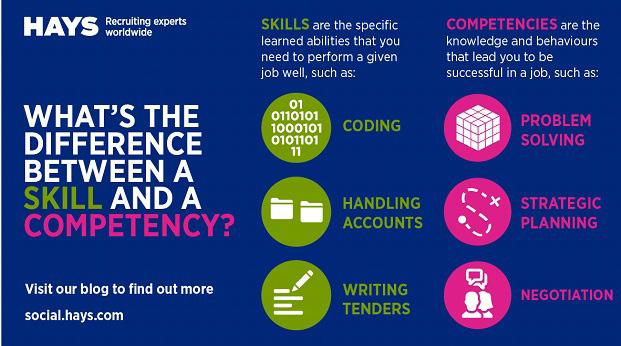
Mentoring is a great way to put the mentee in the driver’s seat of their own learning experience and deepen the learning into competency/capability development. An effective mentor will help the mentee see beyond the immediate skills they require to tackle an immediate need and help them make conscious decisions around their future

39 ARTICLE STATE OF THE INDUSTRY RESEARCH https://social.hays.com/2019/10/04/skills-competencies-whats-the-difference/
development. For example, how or when to apply their newly acquired skills or identifying missing skills that ought to be developed.
● Creating visibility for the mentee to see opportunities within their own organization rather than outside of it.

The best talent in your organization is often thinking it would be easier to move up and out rather than advance within the organization. Promotions are difficult to acquire in the face of limited availability and sometimes confidence is lacking to apply within one’s own organization for that desired career jump.

Mentors often encourage their mentees to push for stretch targets and set goals a little further beyond their comfort zone. This is often in the form of an appropriate challenge addressing common barriers such as imposter syndrome that might be stopping their mentee from coming forward for promotion. Internal mobility can often be made easier with systems such as internal jobs boards or career mapping, however mentoring makes the jump more palatable, especially for staff that may perceive progression opportunities as typically inequitable.
● Supporting staff to build resilience and the ability to cope amidst difficult business or personal circumstances.
Mentors become confidantes, supporting agents, and cheerleaders in their mentee’s journey. Simple encouragements and the ability to externalize challenges is often the difference between a disengaged employee and one that is ready to face difficult circumstances head-on.
The greatest builder of resilience comes from pillar 1 of Josh Bersin’s ideal state of work, a sense of meaningful work. Mentors are often given a great sense of purpose through mentoring, not just the mentee. The ability to support others in their journey gives mentors the opportunity to reflect on their own circumstances and derive meaning from their work as they help others to succeed.
The current state of internal mobility, succession planning, and career development is in a particularly acute moment of technological disruption, however, the people it aims to empower are more important than ever. They are asking for opportunities to connect with others in the organization with meaningful relationships that help them develop. Mentoring could be the glue your team has been searching for to galvanize your plans to respond to the needs of your people.
like to comment?
STATE OF THE INDUSTRY RESEARCH
Alex Richardson is the CEO and Founder at Art of Mentoring Would you
40 ARTICLE

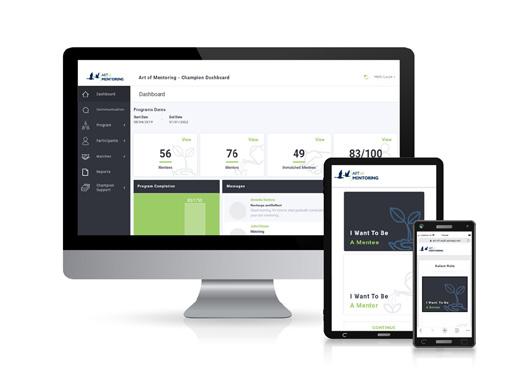

Mentoring Solutions
Deliver Results Expert, Evidence-Based Mentoring Program Design in line with your business objectives developed by a team of mentoring experts. Program Delivery Solutions That Suit Your Needs Deliver your program in-house outsource to the A Powerfully Simple Technology Our platform embodies powerful simplicity using automation, scalability and a fully customizable user interface, always with the user at the forefront of design. World-Class Mentoring Training Resources Completed by over 100,000 people globally. Attract D evelop R etain E ngage Servicing over 26 countries, our team of subject matter experts offer decades of mentoring experience. We combine evidence-based mentoring expertise with the latest technological innovations to enable organizations to develop impactful, scalable and cost-effective mentoring programs that get results. Learn more www.artofmentoring.net • Reverse Mentoring • Women’s Programs • DE&I Programs • Leadership Mentoring • Ethical Mentoring • High Potential Talent • Graduate Programs • Middle Management Mentoring • Project Based Programs
Strategic
That

For more information: 1.877.472.6648 sales@hr.com www.HR.com/epubs The HR Research Institute tracks human resources trends and best practices. Learn more at hr.com/featuredresearch The State of Internal Mobility, Succession, and Career Development 2022-23 Talent Management Excellence • December 2022
The Future Of Work: Industry Predictions For
As 2023 is just around the corner, the coming year is going to see a lot of adaptations. The past year has brought great shifts in the workforce landscape ranging from employment issues to overall business operations. From remote/hybrid work options to employees returning to work, Great Resignation, recession, quiet quitting, and layoffs, there has been no shortage of twists and turns.
In the new year, businesses are likely to face an uncertain year yet again. Check out a few predictions for 2023 shared by top executives on some of the workforce changes we might see in the new year and how businesses can adapt.
2023
TOP PICK
Compiled by The Excellence Publications Team, HR.com
Prioritization of Community, Not Just Productivity
While leadership in the “Future of Work” space initially came to those who figured out 100% remote productivity, the impact from the lack of deeply rooted connectivity and thus engagement will dictate the next wave of leadership going to those companies that recognize how to develop community in the hybrid environment. Companies will want to benefit from both the advantages of hiring from a virtual workforce, as well as building in-person connectivity and engagement, so that financial and cultural strategies will evolve as a result. For example, closing offices sitting virtually empty, consolidating to smaller but re-designed purpose-driven office space that accommodate large team gatherings so that companies can continue a highly virtual workforce while requiring employees to come together for planning, relationship development, etc certain times of the year.
Gig Work Structures Will Redefine Traditional Retirement
With about a third of the US workforce over 50, there will be a market shift in the way we define “retirement,” as the aging workforce increasingly expresses interest in remaining engaged in work in a part-time capacity. At the same time, companies have a keen interest (actually, need) to retain their deep industry expertise and relationships in what have been traditionally only seen as full-time positions. In turn, HR leaders will be challenged to embrace and define gig and flexible structures, that create knowledge transfer opportunities internally, while keeping this critical segment of the population engaged in options that support their life choices – and to do so without imposing financial burden on the organization.
Building Talent Marketing with a Focus on Agility (i.e.Transferable Skills)
Amidst the challenging economic climate and hot labor market (with strong talent moving around with high expectations of their employers), HR leaders will prioritize workforce planning that focuses on building talent pools with transferable skills, so they can quickly flex and fill talent gaps as business strategies shift.

People-First Culture Will Become Table Stakes
Yes, the market will slow down with the increase in downsizing, however even those companies still need the best talent to execute refined business strategies, and companies will still compete for that talent. This talent knows their worth and has high expectations from their employer – thus investing in a people-focused culture will not change, but remain a core priority —including a robust benefits portfolio, a focus on talent retention, and strong leadership. In the end, the foundational message must be about people, to ensure burnout and disengagement stay at bay, and to keep the best talent attracted to those key strategic roles, the newly refined business strategy requires to remain competitive.
Talent Management Excellence presented by HR.com DECEMBER 2022 44 Submit Your Articles The Future Of
Industry
For 2023
Work:
Predictions
Megan Smith, Head of HR, SAP North America
Social Good Will Take the Spotlight

It’s been argued that companies that prioritize social good and embrace a corporate social responsibility (CSR) campaign can see benefits to their business as the market will perceive the business is made up of conscientious citizens. In turn, this can lead to better business practices and more potential prospects as working with a company prioritizing social good can bring a positive public outlook and inspire employees to be part of these CSR efforts. Next year, I expect to see more companies take public stances on global issues, drive social capital toward aiding significant causes, and use these campaigns to galvanize existing talent while engaging new candidates globally. These efforts are good for the world, business, and humanize a brand, making it a more attractive workplace for younger generations.
Remote Work Will Continue to Reign
Being fully remote since 2016, we’ve been used to the great benefits that the rest of the corporate world didn’t experience until 2020. Not only does it give employees a more flexible way to work, but invites cultures from around the world to contribute to a business’ success. Working remotely with large teams is actually more productive and many businesses will drive resources toward a remote infrastructure. With so many companies still trying to force their employees back to the office, we’ll continue seeing talented workers shifting their positions to companies that let them balance work and life in the truest sense of the phrase.
Career Plans and Coaching
As part of the employee journey, businesses need to stop playing the guessing game and give their workers a clear plan for how they can move their careers forward. We’re going to see more companies designate leadership as dedicated coaches to help employees reach the next promotion and advance career trajectories. Through clear goals, expectations, and support from peers, a career plan will empower an employee to grow in their own right and know exactly what is expected of them to grow professionally. Especially with layoffs plaguing the tech industry at large recently, smaller companies offering this benefit can find it helpful to attract new candidates when suddenly tens of thousands of talented, unemployed workers are quickly looking for a new job.
Building People Departments
So many companies will likely look outside the organization to fill a new position, but I expect more to build out people departments that better identify employees that can take on these new roles internally. By combining different aspects of talent, operations, and employee experience, backed by a robust recruitment tech stack, it can be simple to identify those that are best suited to take on new roles or higher-level work. More companies will prioritize this focus in the coming year as it’s a great way to keep employees engaged with their overall career, and it can act as a benchmark for others to know growth is easily achievable.
Separate Learning and Development
Learning and development are often interchangeable but come 2023, businesses need to shift this status quo. There’s the old school “HR” mindset which is humans are a resource that you can manage just like any other resource in the company, but this isn’t the case anymore. Learning needs to be treated in association with a specific role and be part of employee experience while development is about growing an employee on a human level, living under talent development. That distinction is important because when employees are underperforming in their roles at companies that treat humans like resources, it becomes about the person not being good enough. Come next year, companies need to put more focus on aligning someone with the right role and bringing the human element back to the spotlight.
Talent Management Excellence presented by HR.com DECEMBER 2022 45 Submit Your Articles The Future Of Work: Industry
For 2023
Predictions
Alina Vandenberghe, Co-CEO/Co-Founder, Chili Piper
The Future Of Work: Industry Predictions For 2023
Elmquist, CHRO, Phenom
Speed and Accuracy Wins; Rapid Recruiting

Talent isn't waiting two weeks for a job interview. They want a job and they want it now. Know the fit and make the offer. Rapid recruiting is the trend that you have to master or you will lose the talent game.
Talent Acquisition is Talent Management
I see it as a seamless desire to join a company and plan your career from day one, so candidates can see their career growth as they onboard. Disrupt old beliefs. Be inspired by young professionals’ drive and join the experience by creating a measurable and inspiring path for career growth and development for your people. AI empowers people at all levels of an organization to map out their careers.
Lifestyle is the New Work Style
See your employees as whole, unique individuals with lives outside of work. Banish nostalgia! Make this a larger conversation than ‘back to the office!’ Survey your teams, find out what they value, and what earns you loyalty. Challenge long-held beliefs that “butts in seats” is more productive than new ways to work. Measure productivity.
It’s not about what makes leaders feel better, it’s about the outcome and quality of work completed.
AI Everywhere
AI isn’t making personnel decisions. AI is simply supporting and informing decisions faster and more accurately. Leaders make the decisions; AI provides objective data to help us get there. Take the time to get informed on the impact of AI at work. Understand what it is, how it works, and how you can implement and win the talent game.

More Industry Shake-Ups
The most disrupting companies are being built or started in 2023 and will continue to make a big splash for years to come.
Goodbye “Woke-ism”: Being “Woke” is Out in 2023
People want to address real problems as it pertains to war, food production, climate, etc.
New Hybrid Standard
The days of being fully remote are ending. The new standard will shift to a hybrid model of being in-office/in-person at least 3 days a week.
Increasing Layoffs
There are going to be continued layoffs and workforce reductions specifically in the back office, non-revenue generating jobs.
Talent Management Excellence presented by HR.com DECEMBER 2022 46
Jess
Alex Zekoff, CEO and Co-Founder, Thoughtful
Would you like to comment?
Move Over ‘Quiet
Quitting,’ An Old Trend Is Back: ‘Quiet Firing’
The toxicity of this trend is quite alarming
By Amit Mishra, iMocha
You’ve probably heard about ‘Quiet Quitting,’ where employees don’t quit their jobs but do the minimum amount of work required. There’s another related trend — Quiet Firing, when employers create unpleasant work conditions for non-performing employees, which subsequently pushes them out. In essence, the employer is intentionally distancing their employees from better career opportunities and purposely sabotaging employees’ chances to stay in their jobs.
The employee is stuck and has no opportunity to work on essential projects, receive a salary increase, or get a promotion. The only option for the quietly fired employee is to leave the company or quit the team. The employer is technically creating a passive-aggressive work environment that it hopes will encourage an employee to quit. The toxicity of this trend is quite alarming,
considering most companies are creating policies around diversity, equality, and inclusivity in the workplace.
While trending, ‘Quiet Firing’ is not new. Once labeled “constructive dismissal,” it has been leveraged by managers for decades to either rid themselves of employees
who can’t be fired or avoid the discomfort of firing someone. Legal consequences vary per country, but once the legal obligation ends for the employer, the employee acquires the right to make a claim against the employer. Management behavior of this sort can arise from a multitude of factors.

Talent Management Excellence presented by HR.com DECEMBER 2022 47 Submit Your Articles
Poor Leadership
Hostile work environments don’t go unnoticed in organizations. Employees quit. When doing so, the reflection is back on the manager first, not the employee. Managers should identify employees who are not performing as well as others and help them improve their abilities on the job. There are specific steps that managers can take to implement effective career development strategies.
Rather than acting on impulse and giving up on employees, managers should recognize employees who don’t perform well in certain situations and adapt to their capabilities and limitations. When managers choose the former and create hostile environments, it shows laziness, lack of creativity, and weak leadership.
Toxic Workplace
In any organization, signs of a toxic work culture start to surface once employers lack trust in their employees and deploy passive-aggressive tactics creating a hostile work environment. Across departments, a breakdown of communication and lack of coordination prevents employees from meeting their business objectives. This domino effect hurts business operations and silos teams from collaborating on common goals.
Additionally, bias and prejudice take reign. Managers come to share a bias against an employee, neglect or ignore others due to sex, religion, background, color,
or race. The negative projection is, unfortunately, infectious. Employees are subdued in their roles, constantly excluded, not appreciated, nor tasked with new projects, which eventually leads to their quiet firing.
Working within a hostile environment can also lead employees to have mental health issues. The US Surgeon General published a report on how important the role of the workplace is in our lives.
Workplace trends like ‘Quiet Firing’ (and ‘Quiet Quitting’) are indicators that Americans are experiencing chronic stress in the workplace. Employers must change their ways to alleviate stress in the workplace to improve their employees’ health.
Lack of L&D Strategies
Eighty-seven percent of companies worldwide already acknowledge that they have a skills gap, according to McKinsey To reverse this trend, employers must harness deep knowledge of their employees’ needs and their technical capabilities to help them grow and perform on the job.
Several managers fail to create an effective L&D strategy or don’t even know where to begin. Market changes during an economic downturn put L&D strategies at risk too, since companies lack the time and resources to keep employees updated.
If L&D programs are ineffective, employers will lose visibility into employees’ skills and development gaps will widen, thus making an organization
uncompetitive which also snowballs into poor performance and loss of employee confidence. Managers are then put in a position of defeat and haphazardly let employees go vs. training them with new skills required to stay in their jobs.
Reskilling Emergency
The World Economic Forum is calling for a global reskilling revolution. By the end of 2022, 42% of the core skills required to do a job are expected to change. This shift requires that companies reskill their employees in digital areas as well as focus on helping them develop specialized skills, including:
1. Data Analytics and Reporting
2. Artificial Intelligence and Machine Learning
3. Digital Marketing and Sales
4. Human Resources, Care, and Education
Managers need to change their approach to upskill/reskill their employees. By investing in better technologies, employers can resolve factors that lead to ‘Quiet Quitting’ or ‘Quiet Firing.’ Comprehensive skills assessment tools and efficient skills-building strategies are also critical to improving the workforce
Utilizing such resources, companies can understand skills gaps and learning requirements. Additionally, they can create ongoing assessments to evaluate employees post-training, considering the tough job of managing employees on an ongoing basis.
Talent Management Excellence presented by HR.com DECEMBER 2022 48 Submit Your Articles
Move Over ‘Quiet Quitting,’ An Old Trend Is Back: ‘Quiet Firing’
Employers can also encourage employees to self-train and learn independently by providing paid training times and offering access to upskilling courses. Employees need to provide time and flexibility for employees to participate in upskilling programs while working full-time as well as managing their personal commitments.

While highly technical skills are important for success, it is a critical need to develop and possess interpersonal and soft skills. Examples include interpersonal dynamics, creativity, and collaboration, as well as skills related to specialized roles such as sales, human resources, care, and education.
Thankfully, many organizations have built great cultures which are open and adaptable to change. Good managers have a broad understanding of which
employees are responsible for day-to-day operations and their roles and responsibilities. Knowing the employees over time, chances are managers have witnessed their employees’ work first-hand and are able to help upskill/reskill those individuals.
Conclusion
If one thing is constant, it’s that the workplace will keep changing, and so will the talent requirements. Managers who become complacent and fall prey to these ‘Quiet’ trends will negatively impact the development of their employees and their organizations. Those who are updated on their employees’ performance and needs will advance in retaining high-performing talent and maintain their competitive edge.
To do so, companies must continue to understand their
organizational needs, assess the skills-talent capabilities of their employees to fill gaps, and review the efficiency of their current learning and development programs. This will prevent a toxic workplace from becoming a breeding ground for these “Quiet” trends and enable them to build a future-ready workforce.
Would you like to comment?
Talent Management Excellence presented by HR.com DECEMBER 2022 49 Submit Your Articles
Amit D Mishra is the CEO and Founder of iMocha , a leading skills intelligence platform that empowers talent teams to make smarter talent decisions.
Over ‘Quiet
An
Move
Quitting,’
Old Trend Is Back: ‘Quiet Firing’
Perk Up Your Recruitment And Retention Strategy In 2023
By Maggie Da Prato, Dialectica
Ongoing challenges in the employment market have rapidly shifted recruitment and retention from HR-led mandates to critical business objectives now sitting at the top of every leader’s list of priorities. In this fluid environment, differentiation is key to both attracting and retaining talent. Gone are the times when competitive salaries and decent health benefits could win the day. Today’s candidates have more opportunities and choices. So why choose your organization?
Much of the answer to this question lies in your company’s ability to provide a more customized employment experience, tailored to individuals’ needs and career goals. This includes a strong culture as well as meaningful perks and benefits
that offer greater flexibility, choice and autonomy – starting on day one and carried throughout the employment journey.
Achieving a flexible, sustainable, employee-centric benefits model in a dynamic working environment
requires organizations to strike a good balance between the needs of employees and the needs of the business, while serving as a compelling differentiator to attract and retain an increasingly diverse workforce.
Talent Management Excellence presented by HR.com DECEMBER 2022 50 Submit Your Articles
Attract and engage talent by leading with a strong culture and career growth opportunities
TOP PICK
Check out several successful strategies in place to achieve this balance. Today, our flexible benefits approach is helping us to significantly expand our international workforce, achieve exceptional levels of employee engagement, and meet our growth targets.
The following insights and top tips are based on the success we have had with our recruitment and retention strategies and may help other companies ‘perk up’ their benefits programs in 2023.
Finding the Right Formula for Flexible Benefits
Striking the perfect balance of benefits in a diverse and dynamic work environment requires a good understanding of what employees need to thrive professionally and personally, and then aligning your programs to meet those needs. Rather than offering all benefits to all people, a flexible social and well-being program should allow employees to customize the activities, educational pursuits and health benefits that matter most to them – while empowering them to meet key business objectives.
Build Choice into Existing Programs
Establishing a flexible benefits program may sound like a massive undertaking, but you can get started by simply building more flexibility and choice into your existing offerings. For example, we added a Wellbeing Allowance Program – a very
popular benefit among our employees – that enables our team members to choose the well-being options that work best for them. This includes up to $1,000 a year for wellness perks (such as gym memberships, continuing education, and charitable initiatives), plus flexible days and two days off to volunteer annually. Not only does this flexible program resonate with our predominantly Gen-Z workforce, but it also serves as a fruitful discussion point in the recruitment process.
Bring L&D to the Forefront
Tailored health and well-being programs may be an obvious choice for a more flexible benefits program, but perhaps the most compelling (and oft-overlooked) part of a flexible benefits program is learning and development (L&D).
Offering a range of customized L&D opportunities that enhance employees’ skills and support them on their desired career paths is more appealing than one-size-fits-all management training programs – and far more effective in attracting top talent, strengthening internal talent, and encouraging a more diverse and inclusive workforce. That’s because, unlike a more rigid, traditional approach, flexible L&D programs align with employees’ goals, build on their strengths and interests, and provide them with the infrastructure and support they need to grow at their own pace.
A successful L&D program can include a wide range of engaging opportunities and experiences – from mentorship to buddy systems, to funding higher education and everything in between. For now, we will focus on three of the most successful L&D strategies Dialectica has put in place to support our recruitment and retention efforts.
1. Build Excitement and Experience with Relocation Opportunities
For many existing and prospective employees, the opportunity to relocate to other regions is usually seen as a perk. Enabling employees to experience new teams and cities, as well as to join in various roles and at different stages of company growth, are also perceived as significant differentiators in the hiring process and provide people with ample opportunities to grow personally and professionally while building valuable business experience.
2. Prioritize Talent Over Tenure for Empowered Career Growth
In traditionally hierarchical workplaces, the path to career growth often relies on clocking years of experience at each organizational level – a model that falls flat with up-and-coming generations of workers. This is leading many companies to prioritize contribution over tenure and place more focus on proactively developing the skills employees need to succeed in current and progressive roles.
Talent Management Excellence presented by HR.com DECEMBER 2022 51 Submit Your Articles
Perk Up Your Recruitment And Retention Strategy In 2023
We plant the L&D seed as early as the recruitment process. Interviews focus on highlighting growth opportunities in an open-ended way. What will they learn? What training tools are available? How will the onboarding process start them on a path to success? Instead of talking about promotions and career paths, we highlight growth opportunities, stimulating company-wide projects, autonomy, decision-making and initiative, and describe how our organization encourages employees to develop these attributes.
Today, our main criteria for hiring – and career advancement – are not a candidate’s technology or financial skills. Instead, we look for individuals with a growth mindset, an eagerness to learn, and a strong interest in the business world. The career opportunities we offer are supported by robust L&D opportunities that hone the key skills required for each employee’s career stage and responsibilities and set them up for success in future roles.
3. Soft Skills = Strong Workforce
Soft skills development can serve as an important catalyst for a
more engaged, productive, and loyal team. They can also take careers to the next level and build a robust in-house talent pool to support your growth or entrance into new markets.

At Dialectica, we consider our organization to be a soft skills incubator. We offer a multi-level program that allows new and existing team members to build valuable business skills that prepare them for future roles.
Our L&D programs develop real-world skills including project management, communications, coaching, negotiation tactics, and more – offered via a flexible yet formalized approach that methodically develops and reinforces the attributes employees need to grow their careers.
Take, for example, our client service associate program. It works progressively through several stages of career advancement – beginning with sales fundamentals, relationship building, time management, client communications, and operational excellence skills development
– followed by coaching and mentorship, and ultimately, the application of learning on the job. Employees also have the ability to attend our Dialectica Mini MBA Program to learn about business operations, communication, administrative and leadership skills, strategy, mergers and acquisitions, and other advanced management concepts.
From the constrained job market to employees’ shifting expectations, one thing is certain – there is no escaping the shifts happening in today’s dynamic workforce.
2023 is sure to serve as a significant turning point for many organizations as they seek to differentiate their employment brands in the eyes of prospective and current employees. Savvy companies will ring in the new year by enhancing the flexibility and autonomy of their benefits programs – from health and wellness to L&D – boosting their ability to attract talent, reducing costly turnover, and creating a healthier, happier work environment that drives both individual and company performance.
Talent Management
DECEMBER 2022 52 Submit Your Articles
Excellence presented by HR.com
Perk Up Your Recruitment And Retention Strategy In 2023
Maggie Da Prato is the Head of Talent for the Americas at Dialectica , an information services company with the vision to shape better business decision-making worldwide, with offices in Montreal and Vancouver as well as New York, London, and Athens. Would you like to comment?
The Future of Personalized HR Services

Sponsored
by:
Offer strategic personalized HR services to boost employee retention and engagement
INTERACTIVE DECEMBER 2022 Special Research Supplement December 2022
RESEARCH REPORT SUMMARY
The Future of Personalized HR Services 55


Survey conducted by: Sponsored by:
The HR Research Institute, powered by HR.com, the world’s largest social network for Human Resources professionals, is a key part of our mandate to inform and educate today’s HR professionals. Over the past three years, the HR Research Institute has produced more than 85 exclusive primary research and state of the industry reports, along with corresponding infographics in many cases, based on the surveys of thousands of HR professionals. Each research report highlights current HR trends, benchmarks, and industry best practices. HR Research Institute Reports and Infographics are available online, and always free, at www.hr.com/featuredresearch
Management
DECEMBER 2022 54 Submit Your Articles
Talent
Excellence presented by HR.com
INDEX
The Future of Personalized HR Services
Offer strategic personalized HR services to boost employee retention and engagement
Study By The HR Research Institute

“One size fits all” doesn’t always work when offering employees HR services. Employee needs and desires vary widely from employee to employee due to a number of factors such as age, ethnicity, and socioeconomic background among others. What retains one employee may not have the same effect on another.
To better understand personalized HR services and experiences, HR.com investigated the following areas:
● the extent personalized HR services and experiences are currently offered

● the goals behind HR personalization
● the challenges organizations face in regard to designing and implementing personalized HR services and experiences
● which HR functions best lend themselves to personalization
● the specifics of personalization in a variety of HR functions
Key Findings:
● While HR personalization is growing in importance, few actually offer it with their HR processes.
● A variety of challenges could explain why so few offer HR personalization.
● Employee retention and engagement are the driving force behind offering personalized HR services and experiences.
● Organizations take advantage of a variety of approaches to gather information on employee needs.
● Some aspects of HR are more personalized than others.
55 RESEARCH REPORT SUMMARY STATE OF THE INDUSTRY RESEARCH
Exclusive
HR
Personalization
Is Growing More Important but It’s Still in the Early Stages
The majority (80%) of respondents say their organization offers personalized HR services and experiences to only a moderate extent or less, with 10% saying they do not offer this at all. Few (21%) do this to a high or very high extent.

Survey Question: To what extent does your organization offer personalized HR services and experiences?
Just 7% offer personalized HR services and experiences to a very high extent 0 20 40 60 80 100
10% 35% 35% 14% 7%
Not at all Small extent Moderate extent High extent Very high extent
Editor's note: Numbers do not add up to 100% due to rounding.
56 RESEARCH REPORT SUMMARY STATE OF THE INDUSTRY RESEARCH
Many aspects of work have been turned upside down over the past two years, so it’s no wonder that the majority say the importance of personalized HR services and experiences increased during that time (57%).
Two-thirds (68%) also expect personalized HR services and experiences to continue to increase in importance over the next two years. Just 4% expect it to decrease.
Retention and Engagement Drive the Personalization Trend
When it comes to designing and implementing personalized services, there are two goals selected by the majority:
● increase employee retention (60%)
● boost engagement levels (57%)
Several Challenges Hold HR Personalization Back
Nearly half (46%) say ensuring fairness is the main challenge of HR personalization and another 44% say the same about managing perceptions of fairness. Organizations should consider being transparent about personalization where possible to clear up any misconceptions about the process.
Another concern is that employees will have too much thrown their way. Just over a third (34%) say burdening employees with too many self-service obligations is a challenge, and another 34% say preventing employees from being overwhelmed by choices is a challenge.
Personalization Works Well in Multiple HR Functions
Most HR professionals believe learning and development (81%) and wellness, health and wellbeing (78%) are the two functions that best lend themselves to personalization.
A large majority also say employee engagement (73%), rewards and recognition (71%), and benefits (63%) best lend themselves for personalization.
Thirty-eight percent say their organization personalizes self-service technologies to a moderate or large extent. However, 35% do this to a small extent and 27% say their organization doesn’t personalize this area at all. Roughly the same is true about recognition and rewards; 38% do so to a moderate or large extent, 39% do so to a small extent, and 25% don’t at all.
What Do Personalization Leaders Do Differently?
Personalization leaders* are nearly twice as likely as laggards** to say personalization has increased in importance a little or a lot over the past two years (73% vs. 38%). And, they are more likely to say personalization will increase in importance over the next two years (78% vs. 55%).
While two-thirds of personalization laggards say employee engagement best lends itself to personalization, far more personalization leaders (78%) say the same. The same is true for several other HR functions, such as benefits (67% vs. 58%), performance management (61% vs. 43%), recruitment and selection (48% vs. 27%) and compensation (48% vs. 27%).
57 RESEARCH REPORT SUMMARY STATE OF THE INDUSTRY RESEARCH
are more likely than laggards to say compensation best lends itself to
58 RESEARCH REPORT SUMMARY STATE OF THE INDUSTRY RESEARCH 0 10 20 30 40 50 60 70 80 78% 66% 67% 58% 61% 43% 48% 27% 45% 27% Employee engagement Benefits Performance management Recruitment and selection Compensation Personalization leaders Personalization laggards Gap 12pts Gap 9 pts Gap 18 pts Gap 21 pts Gap 18 pts Survey Question: Which HR functions do you think best lend themselves to personalization? Personalization leaders
personalization
Nearly three-quarters (74%) of personalization leaders use employee self-service portals while just over half (53%) of laggards say the same. Further, leaders are also more likely than laggards to utilize manager self-service portals (39% vs. 23%).
For key suggestions on how organizations might become more successful in personalized HR services and experiences, read the complete report.
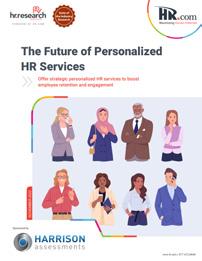
Read the Research Report
*Personalization leaders: Respondents who say their organization offers personalized HR services and experiences to a moderate, high or very high extent
** Personalization laggards: Respondents who say their organization offers personalized HR services and experiences a little or not at all.

59 RESEARCH REPORT SUMMARY STATE OF THE INDUSTRY RESEARCH
For more information: 1.877.472.6648 sales@hr.com www.HR.com/epubs The HR Research Institute tracks human resources trends and best practices. Learn more at hr.com/featuredresearch The Future of Personalized HR Services Talent Management Excellence • December 2022
5 Reasons Why Employees Quit And What To Do About It
Smart managers realize the cyclical nature
of retention
By Kate Zabriskie, Business Training Works, Inc.
“I can’t take it anymore! We’re short-staffed, I’m killing myself to hold it together, nobody says thank you, so goodbye! Life is too short for this. I can work somewhere else.”
“I was doing just fine working from home. Now they’re making us go back. Call me crazy but spending three hours in the car doesn’t excite me. I’m updating my resume this afternoon.”
“I’m not passionate about this place. We’re all about stuff I don’t care about, I don’t connect with my manager, and the pay isn’t that great. I need to find a better fit.”
Thoughts such as those happen many times every day in organizations large and small. While a certain amount of turnover is healthy and normal, when an employer hemorrhages staff, it can take years to recover. And let’s face it, retention is tough in a lot of places. While you can’t make people stay, you can take some critical actions to address the main reasons people say sayonara, so long, and see you later.
Goodbye Reason One: Employees Want a Better Relationship with Their Managers
If you haven’t done a good job cultivating a good relationship with your direct reports, today is the day
to start. Evaluate your behavior. Would you want to work for you? Would anyone else? Look for patterns. If people don’t stick around and they don’t cite another plausible reason for their decision, guess what? It’s probably you. You never hear from any of them after they depart? It’s definitely you. Get honest with yourself. Are you a yeller? Inconsistent? Punishing? Self-centered? Uncommunicative? It’s time to get to work. Identify the behaviors that would cause someone to leave and stop doing them. Next, identify the behaviors that would encourage someone to stay, and start doing those things. Needing to be a better manager is a simple diagnosis with a hard prescription. If you don’t know how to get better on your own, take a class, read some leadership books, craft an action plan, hire a coach, or take a combination of those actions.
Goodbye Reason Two: Employees Are Bored or No Longer Challenged
While people do outgrow jobs, and sometimes there is nowhere to move them, you can solve this problem. If people can do the job and become restless, look for special projects, cross-training opportunities, and other extras. At a minimum, that extra attention should slow their departure. If the problem is reoccurring, ask yourself what kind of person would be right-sized for the position, and consider hiring for those attributes the next time.
Talent Management Excellence presented by HR.com DECEMBER 2022 61 Submit Your Articles
Goodbye Reason Three: Employees Want a Better Work-Life Balance
It’s called a job, not purgatory. While there are certain people who live to work, most people want some semblance of a life outside of work. Ask yourself if you’re running a sweatshop. Does everyone need to be in the office from nine to five Monday to Friday? If not, a little flexibility can go a long way toward building loyalty and making a job attractive. Next, think about measuring people based on output instead of the hours worked. If employees must type on a keyboard a few times to satisfy some sort of monitoring software, you’re most likely not endearing yourself or your organization. What? You don’t trust them to do their work? Then here’s a simple answer for you: anyone who needs to be micromanaged probably shouldn’t have been hired in the first place.
Goodbye Reason Four: Employees Don’t Connect with the Organization or Its Purpose
Not every business touches the heartstrings, but every business should tell its story in a compelling way. If it’s not a story about the business itself, perhaps it’s a connection to the role. Still nothing? If what your organization does isn’t setting the world on fire, think about other selling points. Could it be you have
a warm and inviting family atmosphere? Are you a great training ground for something else later down the road? Can employees stop thinking about work the minute they walk out the door? With a little bit of work, you can find a meaningful story for almost any organization.
Goodbye Reason Five: Employees Can Get More Money Elsewhere

As the saying goes, you get what you pay for. So if you’re paying 1983 prices, why are you surprised when people leave? They can do better elsewhere. Nothing personal, it’s just business. If you pay below-average wages and have nothing to balance the shortfall, you’re going to lose people. You don’t think the job is worth more money? That’s too bad, your competitors do, and you lose. Stay aware of what’s happening in your industry, market, and so forth. Also, don’t only offer money when people let you know they’ve gotten another offer. At that point, it’s often too late.
Economies fluctuate. Sometimes the market favors employers, and other times employees hold a more favorable hand. Smart managers realize the cyclical nature of retention and do what they can to minimize the goodbyes in good times and bad. What do you need to do differently?
Kate Zabriskie is the President of Business Training Works, Inc. , a Maryland-based talent development firm. She and her team provide onsite, virtual, and online soft-skills training courses and workshops to clients in the United States and internationally.
Would you like to comment?

Talent Management Excellence presented by HR.com DECEMBER 2022 62 Submit Your Articles
5 Reasons Why Employees Quit And What To Do About It
The New Workplace Villain Is ‘Quiet Constraint’
Three simple ways to unlock your team’s potential
By James Micklethwait, Kahoot! at work
While the buzz about “quiet quitting” continues to circulate through the HR and workspace, new research shows that another trend may be emerging in workplaces, called “quiet constraint.”
The recent Kahoot! Workplace Culture Report showed that 58% of employees say they hold the knowledge that could benefit their co-workers but hasn’t shared it yet. This trend is most widespread among Gen Z, with 77% of Gen Z workers reporting that they hold valuable information at work.
What does this mean for the workforce, and how can we fix it? Could there even be a silver lining?
How a Lack of Knowledge Sharing Impacts the Workplace
Knowledge sharing is a key factor for workplace success, from leveling up efficiency to powering creativity and innovation, and even talent retention. A report by people success platform Glint showed that employees now consider the opportunity to learn and grow at work as the top factor defining an outstanding workplace culture.
Ultimately, a company’s secret sauce is its employees—their talent, creativity and specialized skills and knowledge. But when employees and teams are disconnected, it often leaves employees who have this knowledge overburdened and those without it in the dark. Teams that aren’t operating on the same playbook would find it challenging to work efficiently and create consistency, and even more so to truly reach their potential for creativity and problem-solving.
Why is ‘Quiet Constraint’ Emerging Now?
There are likely many reasons why so many employees have yet to contribute all the valuable knowledge they can to their team. Many companies have still not optimized their virtual employee experiences, as the Workplace Culture Report shows online training is the number 1 place where employees say they disengage, followed by virtual presentations and team meetings. With many people now working remotely or hybrid long-term, many employees and teams just haven’t figured out how to connect the way they need to.
Talent Management Excellence presented by HR.com DECEMBER 2022 63 Submit Your Articles
TOP PICK
When asked why they haven’t shared their knowledge with co-workers, employees pointed to similar issues. First, employees cited the need for enablement, with 26% saying they have never been asked to share, and 23% saying their employer doesn’t provide them with a channel or means to do so. Barriers in workplace culture were also a major sticking point, with 26% saying they feel their talent and self-expression are stifled at work, and 22% saying they don’t feel valued at work and that their employer underestimates their knowledge and capabilities.
Lastly, a smaller but still significant portion of employees says they withhold knowledge deliberately. Sixteen percent say they do this because they don’t want their co-workers to gain a competitive edge, and 13% say they don’t want to proactively help others unless they have an incentive. This again points back to the need to foster a connected workplace culture where people recognize collaborative learning as a win-win.
3 Ways to Unlock Employee Knowledge for Success
The good news is that unlike quiet quitting, the solutions to address quiet constraints are clear and
achievable for most workplaces, no matter the size or location of employees.
1. Be a knowledge treasure hunter
While your workplace may be bursting with knowledgeable and talented individuals, many may not even realize that a particular skill or knowledge set is in-demand at work. Team leaders, L&D professionals and other group facilitators are in a position to spot when employees show special knowledge or skills that others may find helpful. Get into the practice of scouting for this, and uplift those team members to share what they know with the rest of the group. Also, consider offering greater incentives for employees to share starting with special recognition. Employee recognition is key to creating a fully tuned-in workforce, as employees who say they get the right amount of recognition are four times as likely to be engaged at work.
2. Carve out time just for collaboration
According to the report, 77% of employees would highly value an easy and engaging way to share knowledge with their co-workers. Employees want to help their colleagues succeed, but say they weren’t given the opportunity, space, or support.

Talent Management Excellence presented by HR.com AUGUST 2022 64 Submit Your Articles
The New Workplace Villain Is ‘Quiet Constraint’
The clear solution would be to scheduling regular times dedicated to collaborative learning and working. This can take a variety of forms. When you have more time to commit to this goal, you can explore events from hackathons to open brainstorming sessions, peer learning with employee-led presentations, or even knowledge competitions. During your regular workdays, you can also raise the bar in team meetings, all-hands updates and other check-ins, replacing low-value agenda items with collaboration and interactive knowledge sharing.
3. Add a healthy dose of friendly competition
With many people in the corporate world being competitive by nature, a friendly competition is an excellent motivator for employees to fully engage with each other (also Gen Z’s top choice to help them feel more engaged in virtual training, meetings, and presentations). This brings employees closer together, which is key to encouraging informal knowledge sharing. It’s also a great way to uncover hidden talents and expertise, as employees are motivated to use all they know to win.
Moreover, by framing the learning experience as a game, employees will likely be much more eager to volunteer to host these sessions. Instead of asking employees to formally train their team, which

they may find daunting, invite them to challenge their co-workers to a Knowledge Bowl. This makes it possible for both the employee sharing their knowledge and the competition winners to become workplace heroes.
Creating a culture of learning and collaboration in the workplace doesn’t happen overnight, whether employees are together in one office or spread out across continents. It takes intention, nurturing, and prioritization. However, the return on this investment can be transformative, as employees are inspired to keep developing their skills and empowered to be problem solvers, action-takers, and creators.
James Micklethwait is Vice President of Kahoot! at work . at global learning and engagement platform company Kahoot!. In his position, he leads the growth of the Kahoot! at work business area, overseeing revenue, usage and strategy for building out new cases for Kahoot! in a work context. Would you like to comment?

Talent Management Excellence presented by HR.com DECEMBER 2022 65 Submit Your Articles
The New Workplace Villain Is ‘Quiet Constraint’
HRCI® & SHRM® CERTIFICATION PREP COURSES
GROUP RATES AVAILABLE
For HR Professionals
Show that management values the importance of the HR function, and has a commitment to development and improvement of HR staff.
Ensure that each person in your HR department has a standard and consistent understanding of policies, procedures, and regulations.
Place your HR team in a certification program as a rewarding team building achievement.
For Your Organization
Certified HR professionals help companies avoid risk by understanding compliance, laws, and regulations to properly manage your workforce.
HR Professionals lead employee engagement and development programs saving the company money through lower turnover and greater productivity and engagement.
A skilled HR professional can track important KPIs for the organization to make a major impact on strategic decisions and objectives, including: succession planning, staffing, and forecasting.
HR.com/prepcourse CALL TODAY TO FIND OUT MORE 1.877.472.6648 ext.
|
3
sales@hr.com
1 Less expensive than a masters or PhD program, and very manageable to prepare with flexible study options. 2. Recertification - ensures HR professionals continue to be up to speed on the latest legislation and best practices 3. Recognized, Industry benchmark, held by 500,000+ HR Professionals We offer group rates for teams of 5+ or more for our regularly scheduled PHR/SPHR/ SHRM or aPHR courses.
For groups of 12+, we can design a more customized experience that meets your organization’s needs. You can have scheduling flexibility in terms of the days, times, and overall length of the course.
Groups rates for HRCI exams are also available as an add-on.
All group purchases come with 1 year of HR Prime membership for each attendee to gain the tools and updates needed to stay informed and compliant.
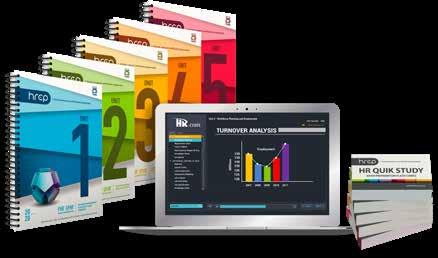
Why Certification is the Best Choice:
CALL TODAY TO FIND OUT MORE 1.877.472.6648 ext. 3
sales@hr.com | HR.com/prepcourse Group
2
|
Rate Options 1
3
New Year, New You? A Light-Hearted Look At 2023 Resolutions For Managers
Embrace new beginnings
By Thom Dennis, Serenity in Leadership
According to a survey by Finder UK, only 9% of people set resolutions for career progression in 2022. ‘New Year, New You’ is a well-used platitude but as many of us happily wave goodbye to 2022 and we think ahead of all to come in 2023, check out some light-hearted advice on how managers can embrace new beginnings and start the new year off with their best foot forward.
1. Meddle Less
Micromanagement is very last year and we predict 2023 will be the year of the hands-off approach, well at least we hope so. Learning how to loosen your grip and being humbled in realizing that projects won’t fall apart without your scrutiny and that your ideas aren’t the only way, could be rather refreshing for the staff around you. Through meddling less, trust is established
and you can assist in developing the leaders of tomorrow.
2. Spread The Joy Beyond Christmas
Make being nice a habit. Could you (authentically) care a little bit more? Get to know the people who work with you, what makes them tick, and show that you really are interested in what is important to them. Reflect if you really developed your work relationships this year, especially with people who work from home. Consider sending a few handwritten notes saying, “You really delivered at work and we noticed and appreciated your efforts … thank you.”
3. Work Out What Gets You Out Of Bed In The Morning
Is it because you have a job and need to earn money or are you excited to go to work? Is it the
people, the work, or the feeling of fulfillment from knowing you made a difference? Have some fun and get to know (even if that is on Zoom) the inspiring people you work with and walk through the door to your workspace with a spring in your step.
4. Feedback: Try A Bit of Give & Take
Did 2022 turn you into an all-give, no-take advice sort of manager? Perhaps the turbulence of the past few years has made you less likely to receive feedback with open ears, and the more senior one gets, the harder it can be to hear feedback. Knowing how to give and take constructive feedback in equal measure certainly aids in establishing an open two-way line of communication which is of course key to a productive and healthy workforce. Healthy may be just what we need after a month of over-indulgence at Christmas!
Talent Management Excellence presented by HR.com DECEMBER 2022 68 Submit Your Articles
5. Respond, Don’t Just React
Reactions are based upon the heat of a single moment and often don’t look at the wider context. When someone cuts you up when driving to work, ask yourself what am I actually angry about? The level of energy you give to that has little or nothing to do with the people in your office. Explore your ‘unconscious drivers’ and develop your self-awareness and then respond. Your employees should be confident in knowing that the chances of you flipping the desk are extremely low and instead a psychologically

safe space has the chance to develop.
6. Show Empathy
Most of us suffer from the January blues in some way, so make it your goal to empathize with, understand and support your people. Be attentive when you make yourself available. Don’t scroll through your emails at the same time as they share something that is important to them. Give them your full attention. We have said it before and we’ll say it again, investing in the well-being of your employees
means everyone can thrive, not just survive.
7. Avoid The Blame Game
Don’t panic, we’ve not heard that you’re being replaced. But are you someone who easily admits that you’re wrong or that you made a mistake? We’ll ask that again. Do you easily admit that you’re wrong or that you made a mistake? Admitting that you don’t always get it right is a strong statement. Don’t avoid taking responsibility. Playing the blame game is for the playground, not the office. This may be a good time to ask yourself if you need a coach.
Talent Management Excellence presented by HR.com DECEMBER 2022 69 Submit Your Articles
Year, New You? A Light-Hearted Look At 2023 Resolutions For Managers
New
8. Be Honest
Does your ego get in the way?
Give credit where it’s due. To build others up and champion them in their progress and successes is one of the most important elements of good company culture. If it pains you to see others do well or give credit to them then ‘Houston, we have a problem’.

9. Don’t Get Comfy
It is easy to let the years roll from one to the next and suddenly be met with the realization that you’re working with the same strategies and methods from ten years prior. Let it be your resolution/ revolution to switch it up! Break down resistance to change. Reflect on last year and consider what brought about a positive

movement and what might have stood in its way.
10. Is Your Workspace Inspiring and Motivating?
This is a lovely one. You don’t need to spend vast sums of money but how can you make your physical work environment more inviting and more conducive to good work? Don’t decide yourself but ask everyone to contribute their ideas. Be curious and inviting.
With an MSc in Change Agent Skills & Strategies, skills as an NLP Master Practitioner, 17 years of experience as an officer in the Royal Marines, and having worked extensively around the world, Thom Dennis brings all his experience together as a facilitator, speaker, consultant, educator and change agent as CEO of Serenity in Leadership. For the last 30 years, his career has been dedicated to facilitating transformation through organizational change. Would you like to comment?
Talent Management Excellence presented by HR.com DECEMBER 2022 70 Submit Your Articles
New Year, New You? A Light-Hearted Look At 2023 Resolutions For Managers

ePublication EditorialCalendar2023 Checkoutthenewandupcomingthemed HRtopicsinTalentManagementExcellence. Check ePublications Editorial Calendar Here. Would you like to submit an article? | Write to us at ePubEditors@hr.com Submission Guidelines 1 The Future of Compensation and Total Rewards Jan 2023 2 The Future of Workplace Trends Feb 2023 2 Succession Planning Mar 2023 3 The Future of Diversity, Equity, Inclusion and Belonging Apr 2023 4 Successful Talent Management Strategies from Hire to Retire May 2023
Thank you for partnering with us!
THANK YOU
SkillSurvey’s talent intelligence platform provides actionable insights and optimizes talent decisions with feedback across the entire employee lifecycle.
Sterling, a leading provider of background and identity services, helps 47k+ global clients create people-first cultures and hire with confidence.

TRACOM is the leader in Social Intelligence training. We offer SOCIAL STYLE, Resilience, EQ and Agility assessments and training programs.


Reward Gateway helps companies engage, motivate and retain people – every day, all over the world. Our unified employee engagement hub provides the best of recognition, reward, wellbeing, surveys, benefits and discounts that support talent acquisition, retention and values-driven growth.

Momentive is a new type of agile experience management company that delivers intuitive, AIpowered solutions built for the pace of modern business. We power the brave, curious, and ambitious who want to reshape their customer and employee experiences, products, industries— and our future. We put people at the center of our technology, and we’re here to collaborate with those who advocate for equality.

15Five is the favorite performance management platform combining engagement, performance, OKR solutions. Our software, education, coaching, and community enables HR leaders to create better managers, employees, and organizations.
 LEARN MORE
LEARN MORE
LEARN MORE
LEARN MORE
LEARN MORE
LEARN MORE
LEARN MORE
LEARN MORE
LEARN MORE
LEARN MORE
LEARN MORE
LEARN MORE
Founded with a single vision and purposeHarrison helps companies optimize human capital by leveraging a deep understanding of human resources and psychology.



LEARN MORE
evidence-based mentoring expertise with the latest technological innovations to enable organisations to develop impactful, cost-effective mentoring programs.

LEARN MORE
EVERFI’s workplace training offerings empower employees to transform their organizations' workplace cultures with impactful, change-driven courses that go beyond compliance.

Hireguide helps companies hire faster, fairer, and with certainty by making structured interviews easy to use. Plan interviews, transcribe your conversation, and evaluate candidates all in one place.
Jobvite is a comprehensive talent acquisition suite that powers a marketinginspired recruiting approach from first look to first day.

PARTNER WITH US
LEARN MORE
LEARN MORE
LEARN MORE
January
VIRTUAL EVENTS & HR.COM WEBCASTS UPCOMING www.hr.com/upcoming_webcasts www.hr.com/virtualconferences View our Upcoming Webcasts Schedule and Register Today! View our Upcoming Virtual Conference Schedule and Register Today! New Ideas and Tools for Effective Performance Management
31, 2023 REGISTER People Strategy for the #FutureOfWork
19, 2023 REGISTER The State of Human Experience in the Workplace
15-16, 2023 REGISTER
EVENTS Rising Minimum Wage Rates and How They May Impact Your Business
January
January
February
VIRTUAL
24, 2023
AM - 12:00 PM ET REGISTER Leadership Succession Made Simple: Do it right and do it (much) faster.
31, 2023
PM - 1:00 PM ET REGISTER The Secret Sauce for Employee Retention? Deliver the Career Progression Opportunities Employees Want
11:00
January
12:00
2023
AM - 12:00 PM ET REGISTER The Art, the Science and the Practice of Hybrid Workplaces
January 17,
11:00
2023
AM - 12:20 PM ET REGISTER Building an Onboarding and Learning and Development Program for a Growing Company
25, 2023
AM - 07:15 AM ET REGISTER
January 19,
11:45
January
06:30
WEBCASTS
13
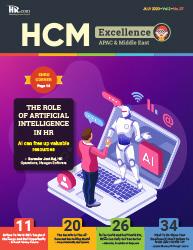



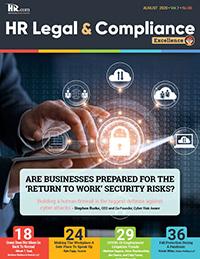


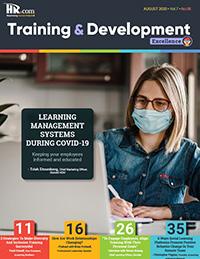




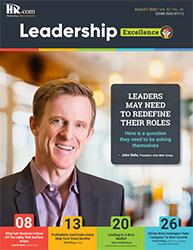
Publications
Targeted
Your
Informing, Educating, Enlightening and Assisting HR professionals in their personal and professional development, the Excellence series offers high-quality content through the publications! Like to submit an article? Use our online submission form or for more information go to www.hr.com/ExcellencePublications
Publications to Reach
Audience

For more information: Phone: 1.877.472.6648 | Email:
| www.HR.com/epubs Talent Management Excellence December 2022
ePubeditors@hr.com


















 Jonathan H. Westover, Ph.D., MPA, SFHEA, AFCIPD
Jonathan H. Westover, Ph.D., MPA, SFHEA, AFCIPD









 Ryan Gottfredson, Ph.D.
Ryan Gottfredson, Ph.D.






























 By
By






































































